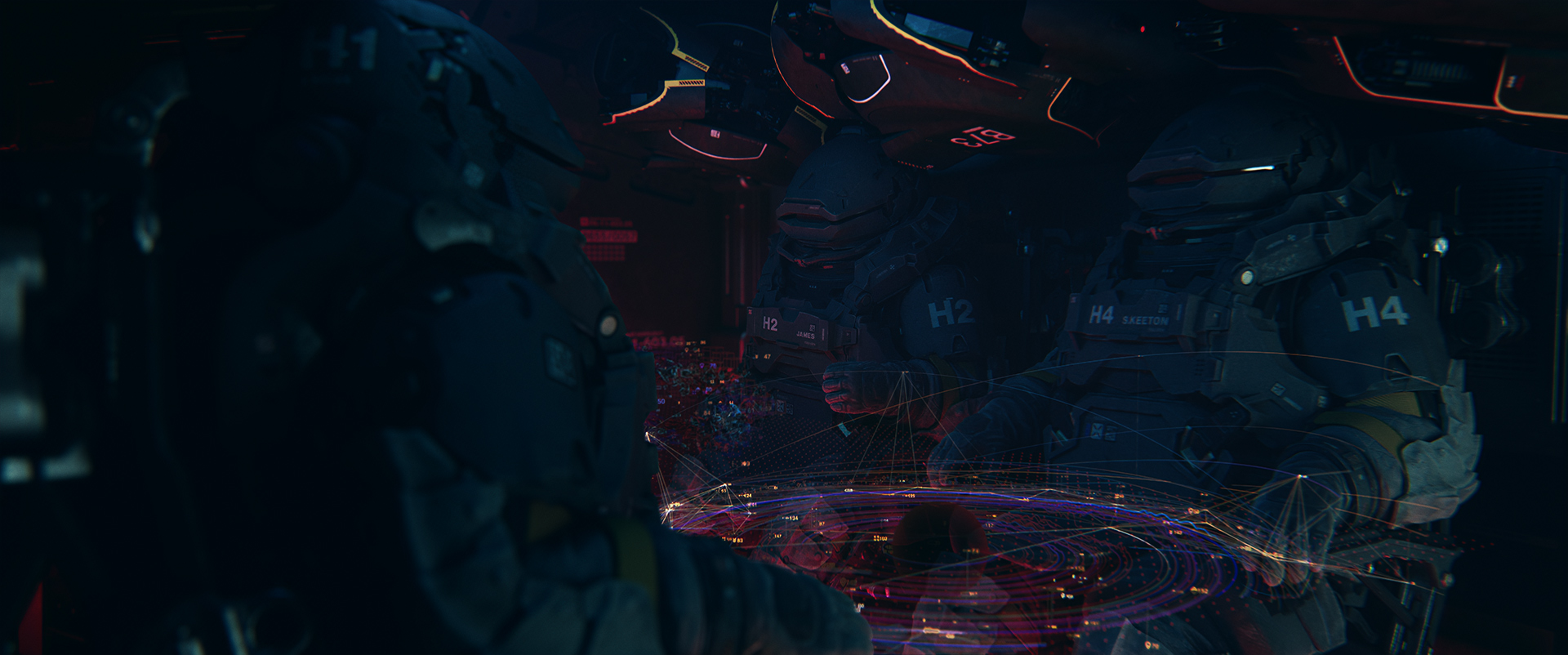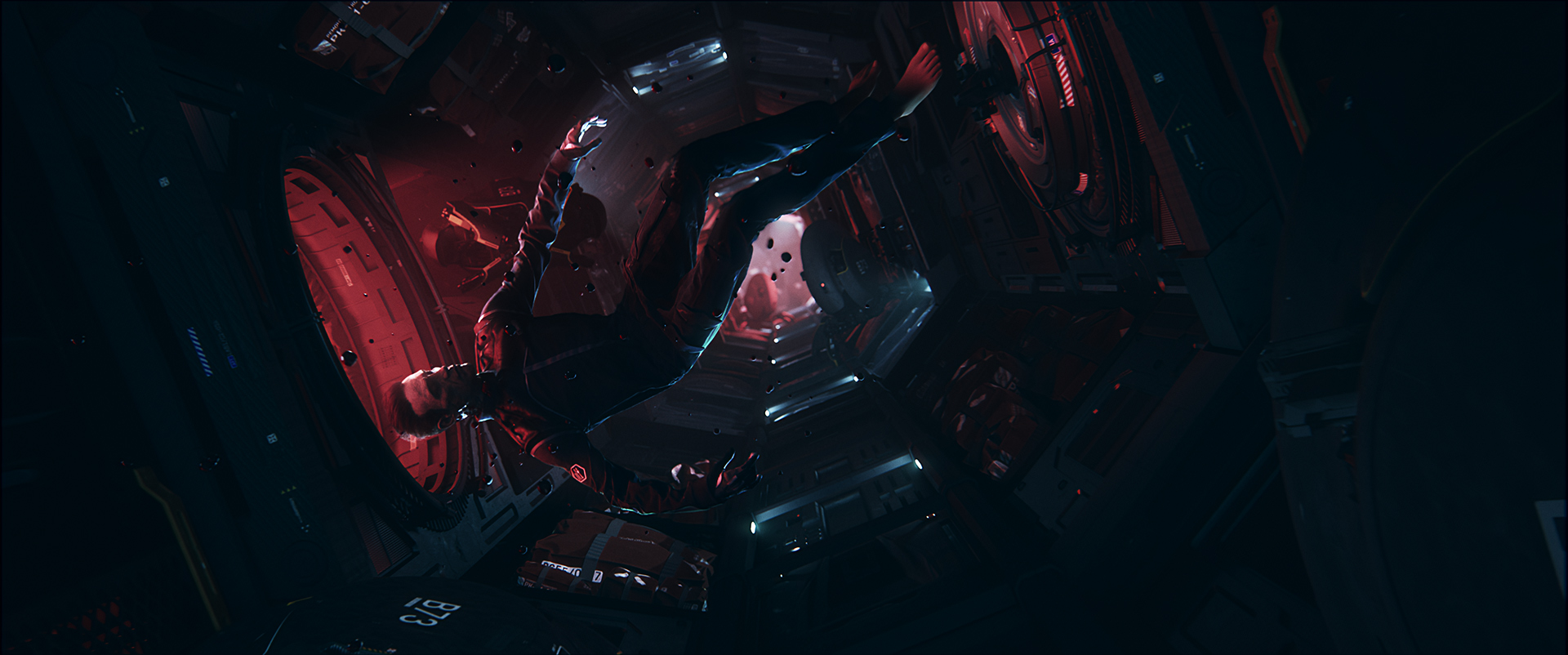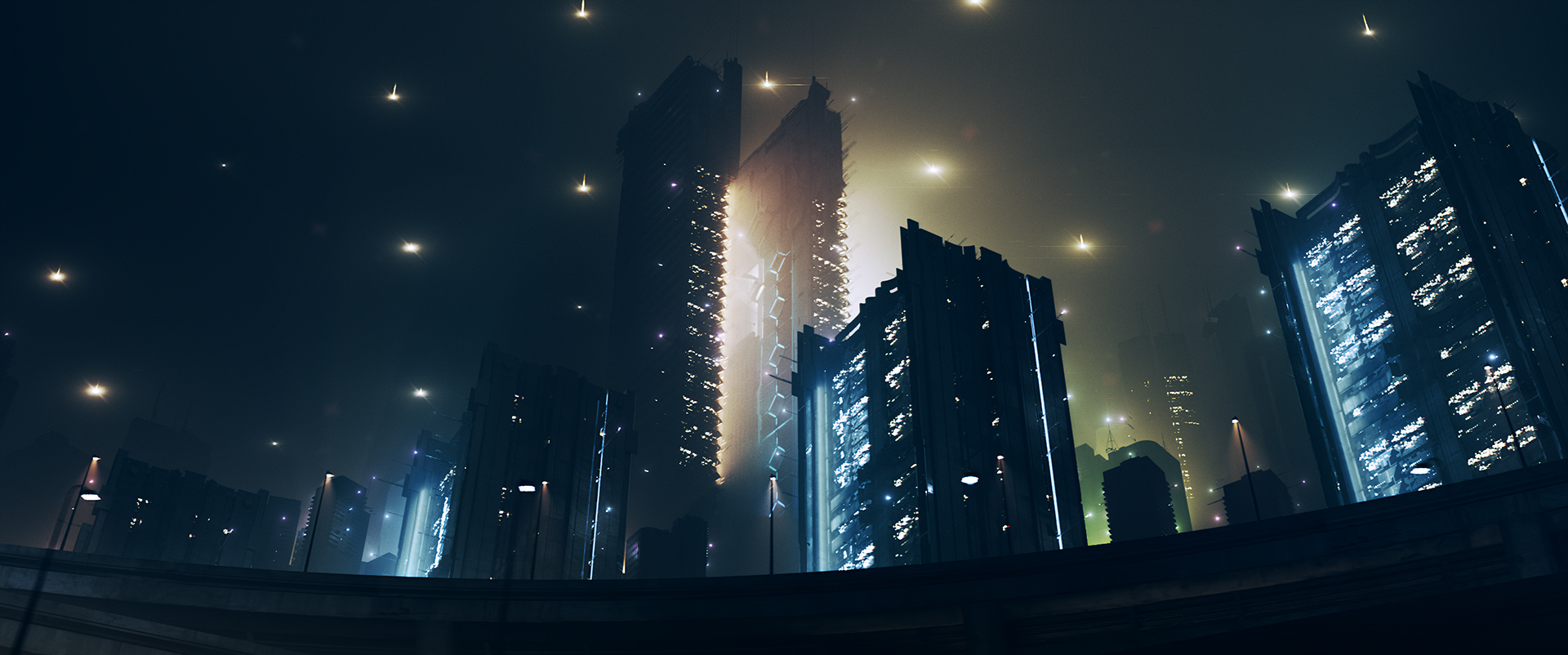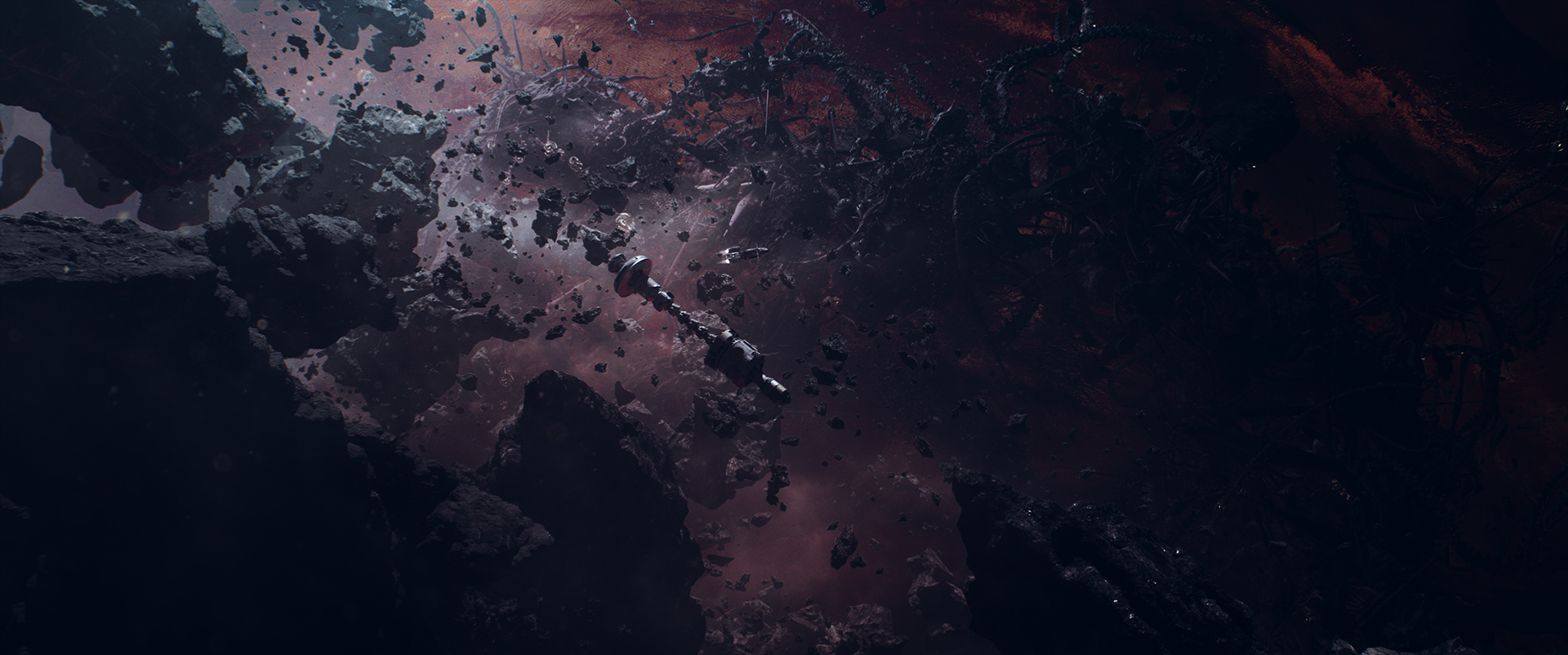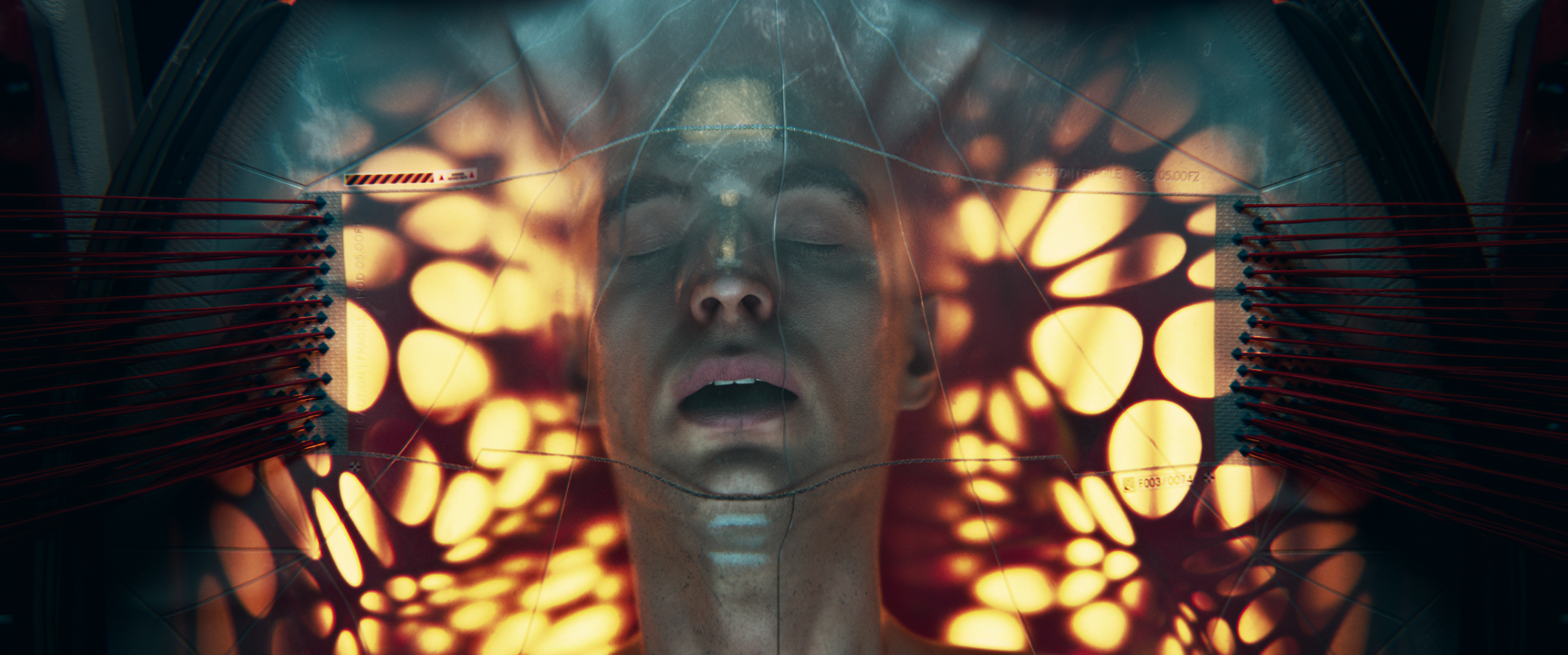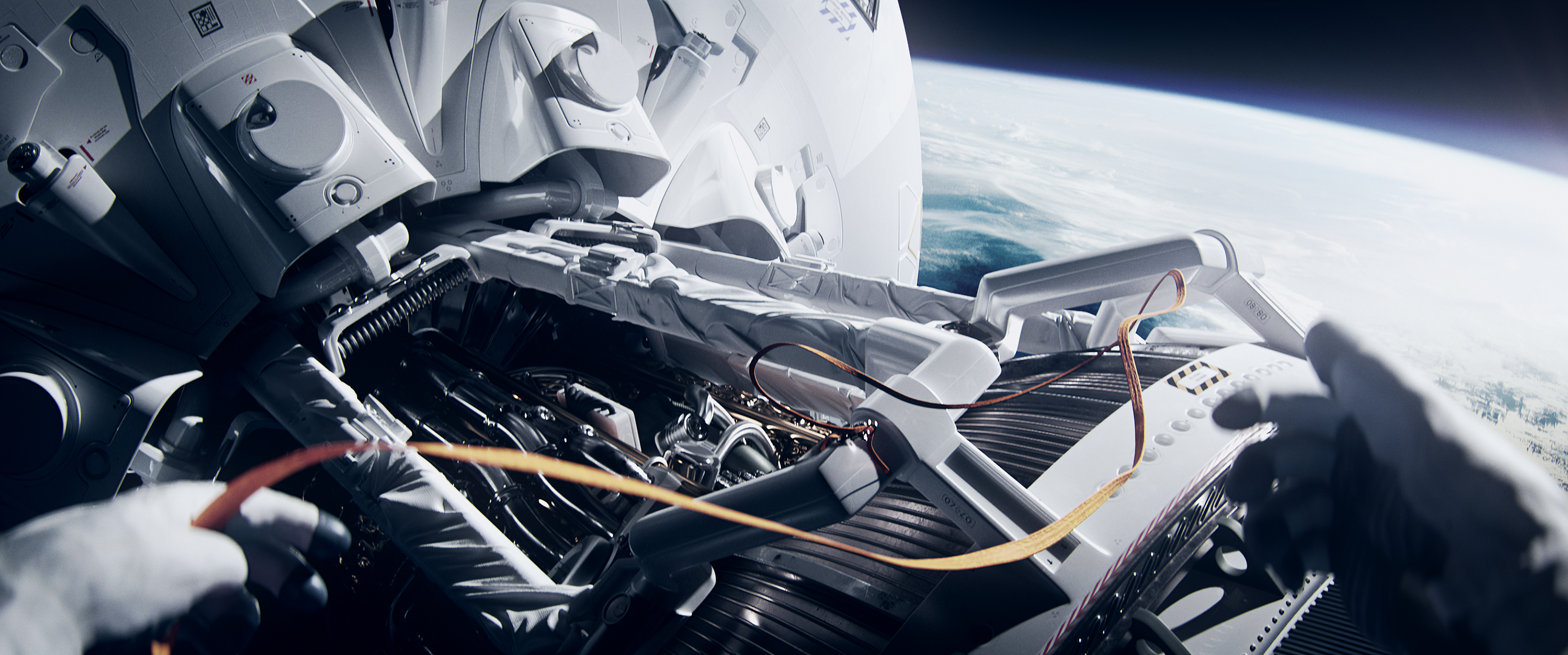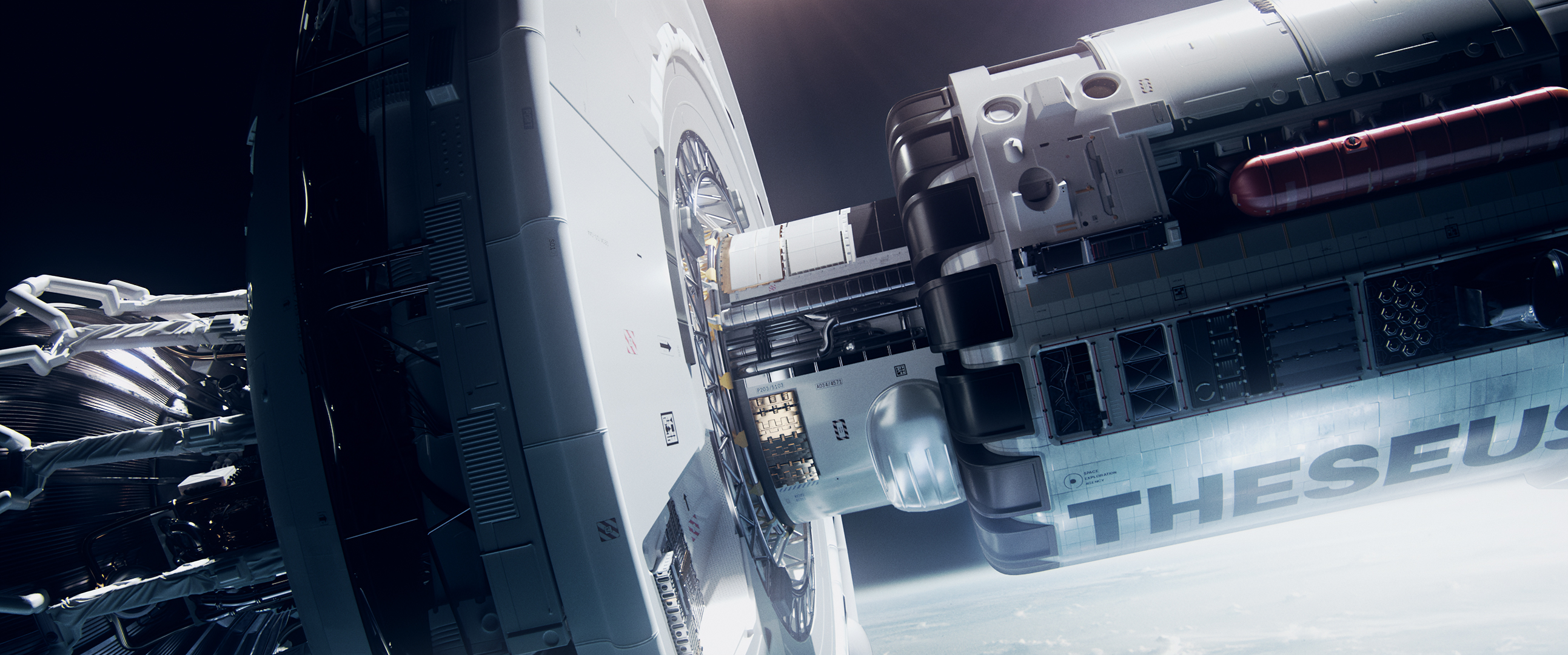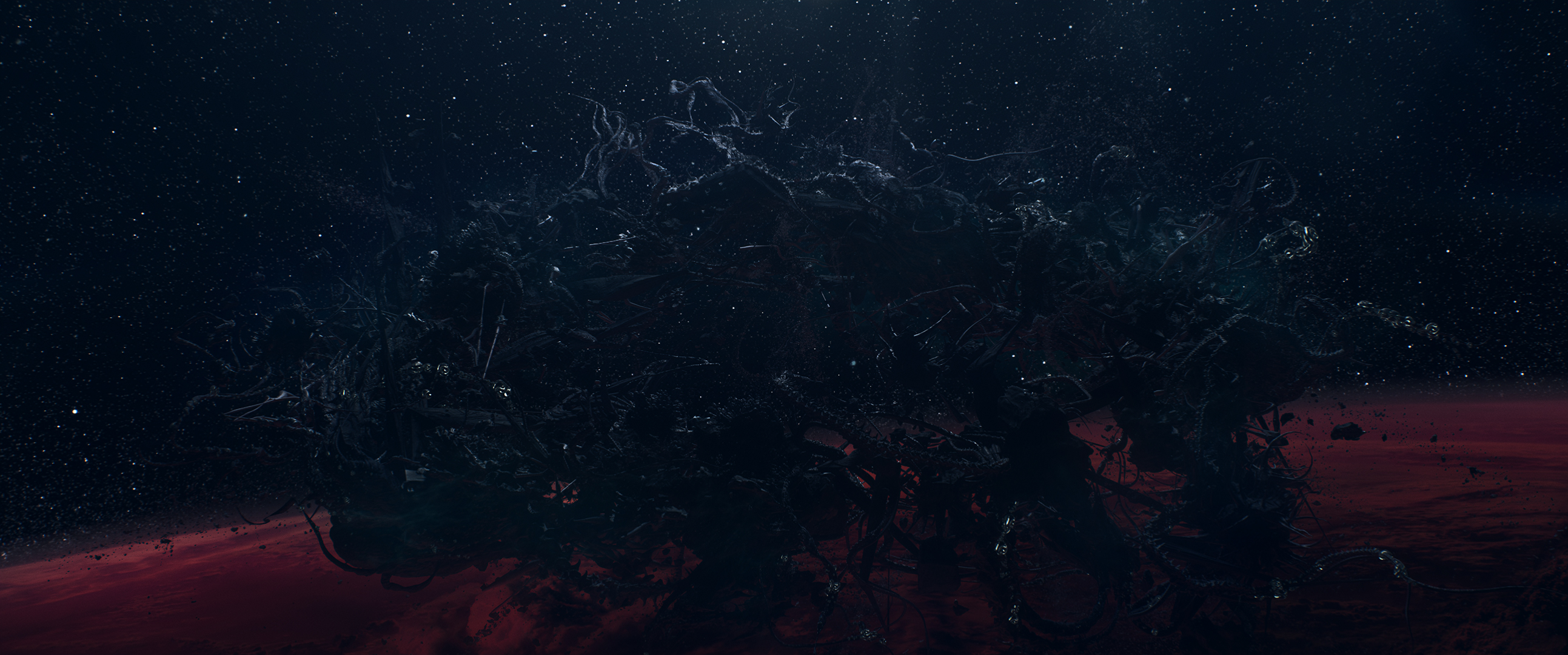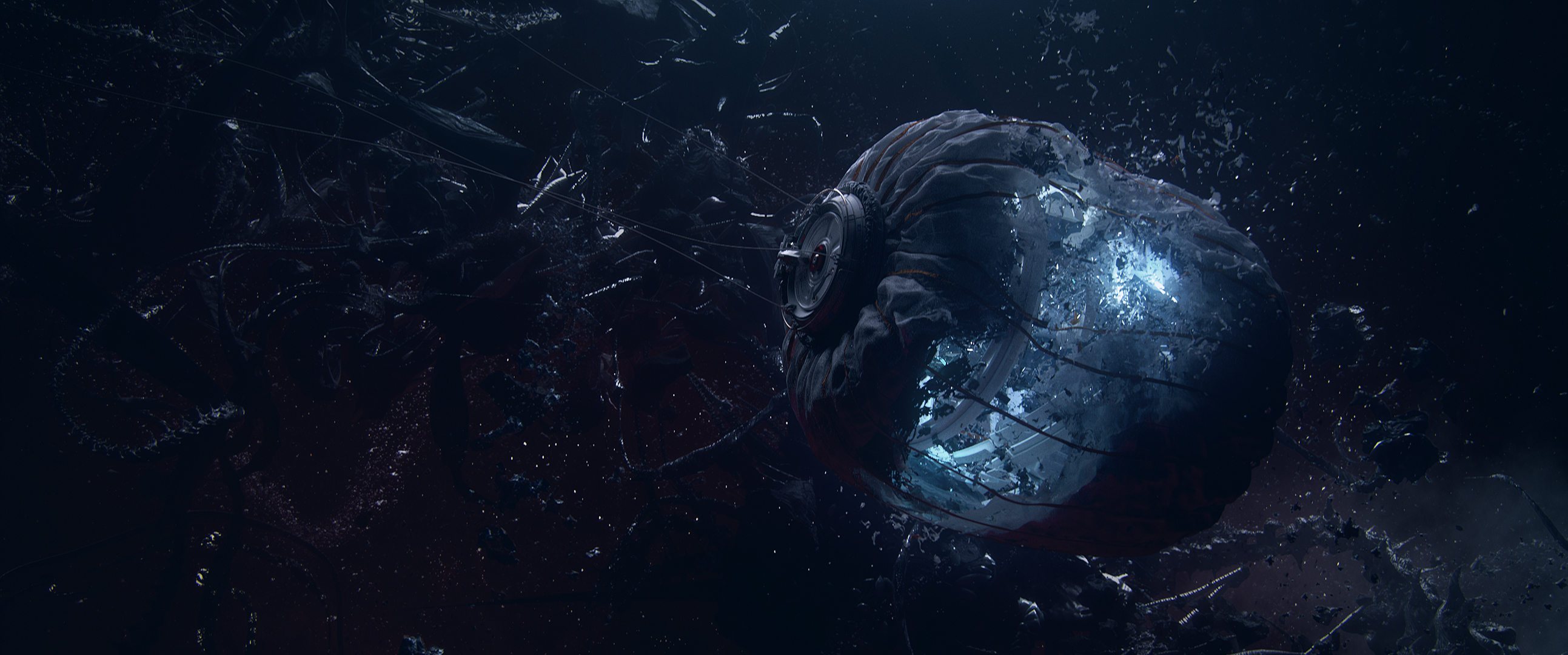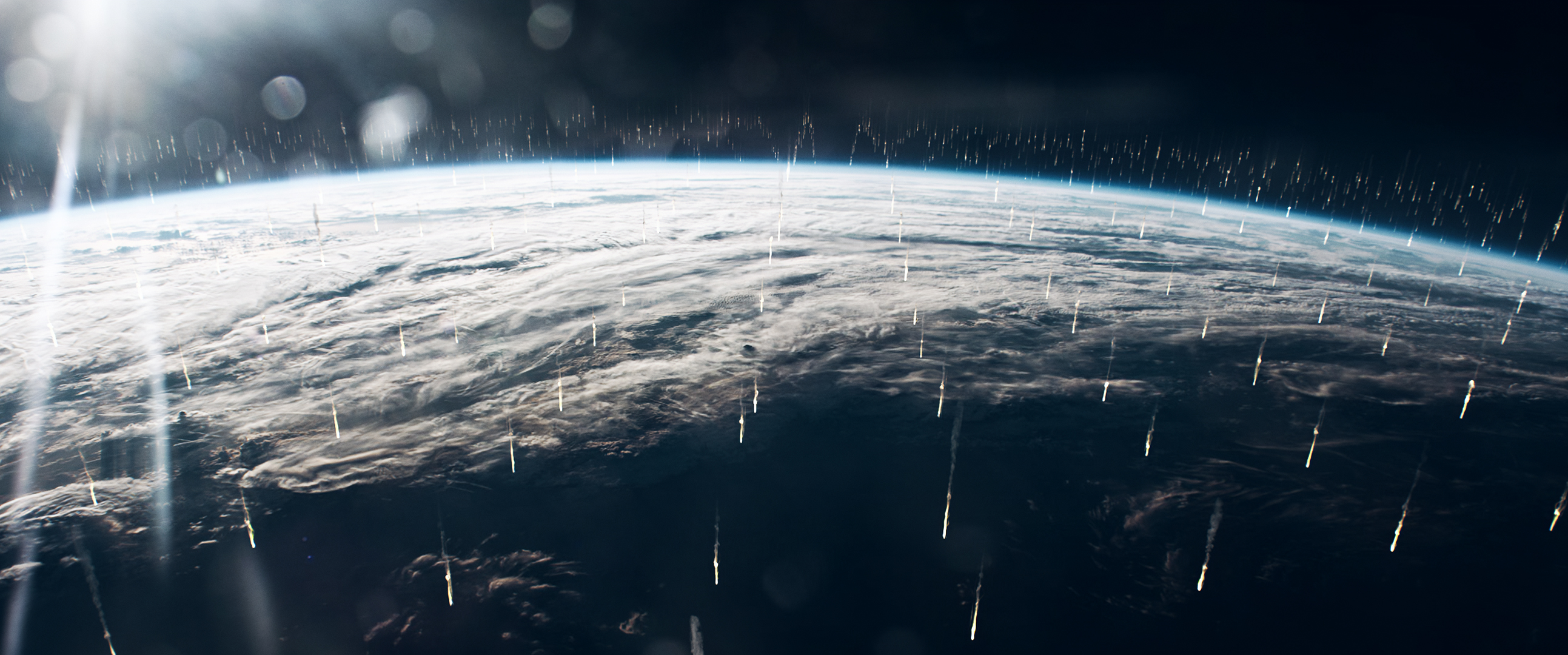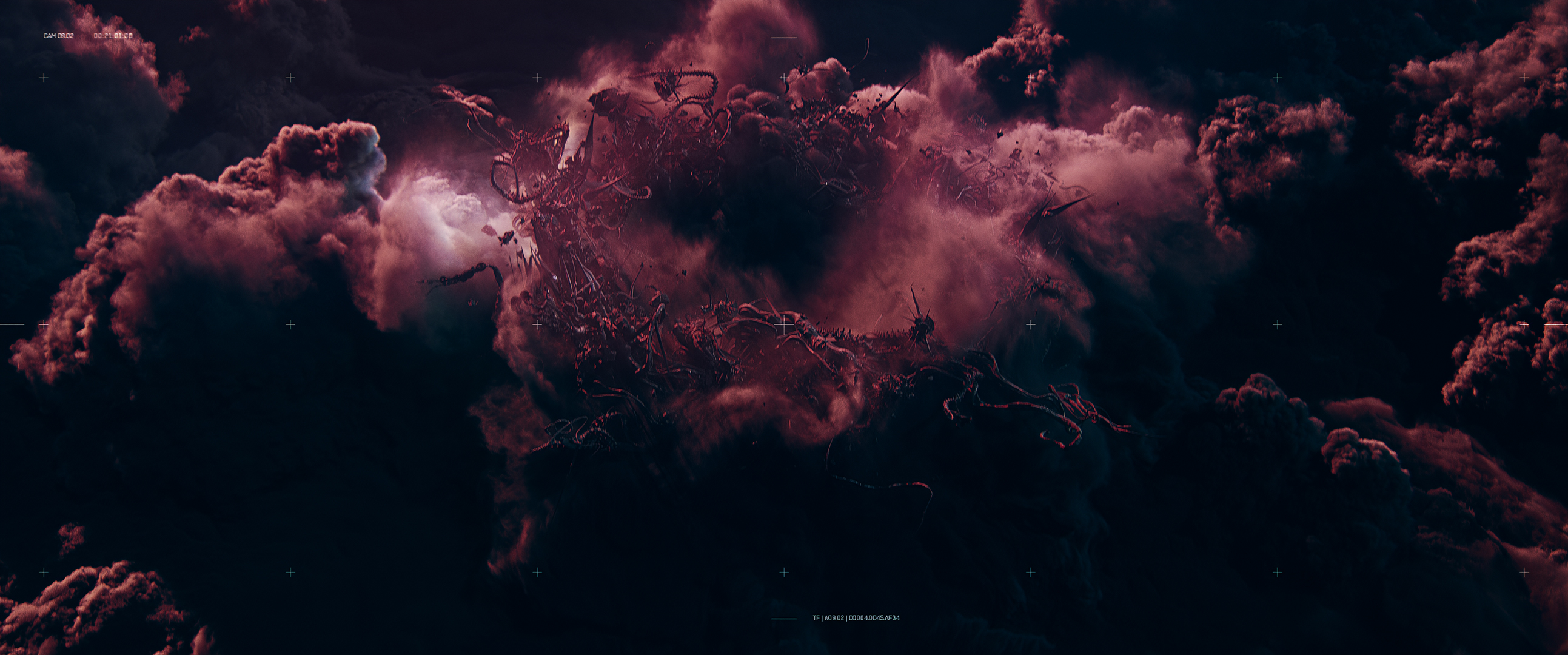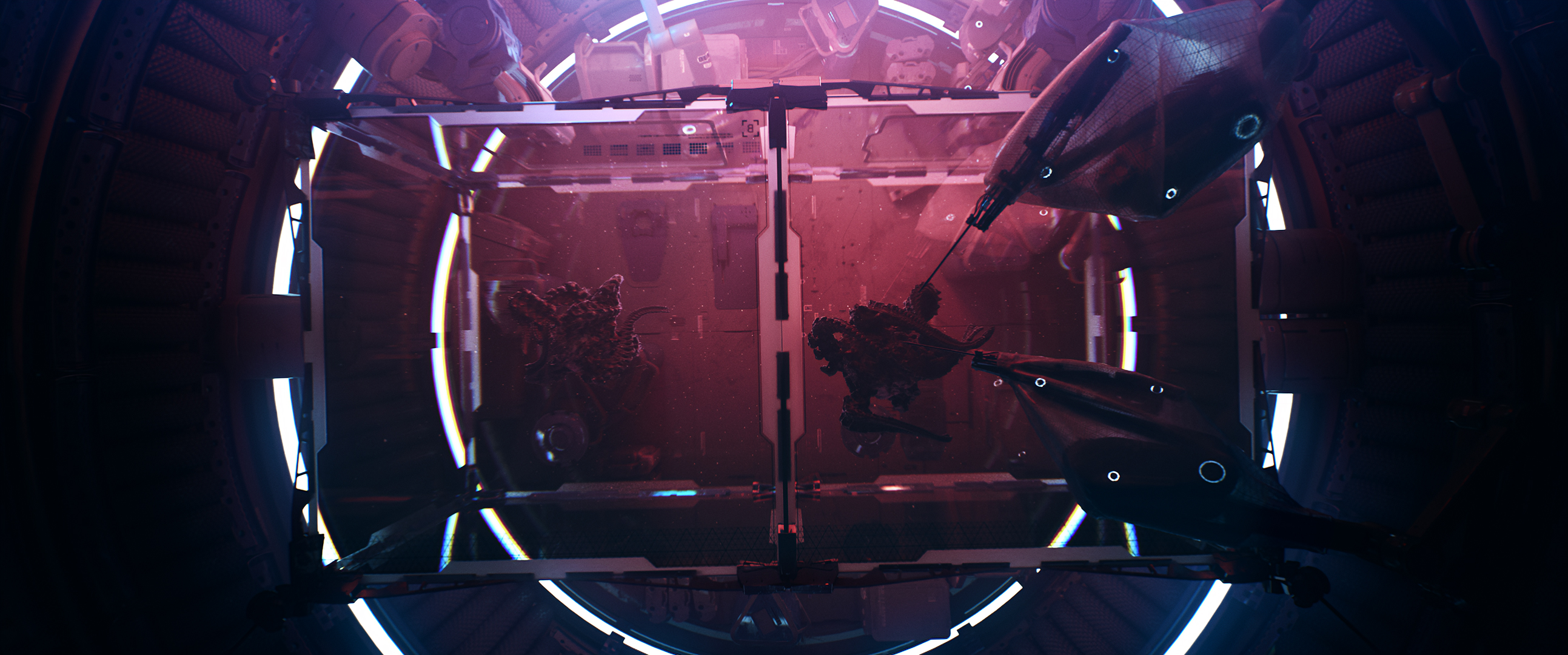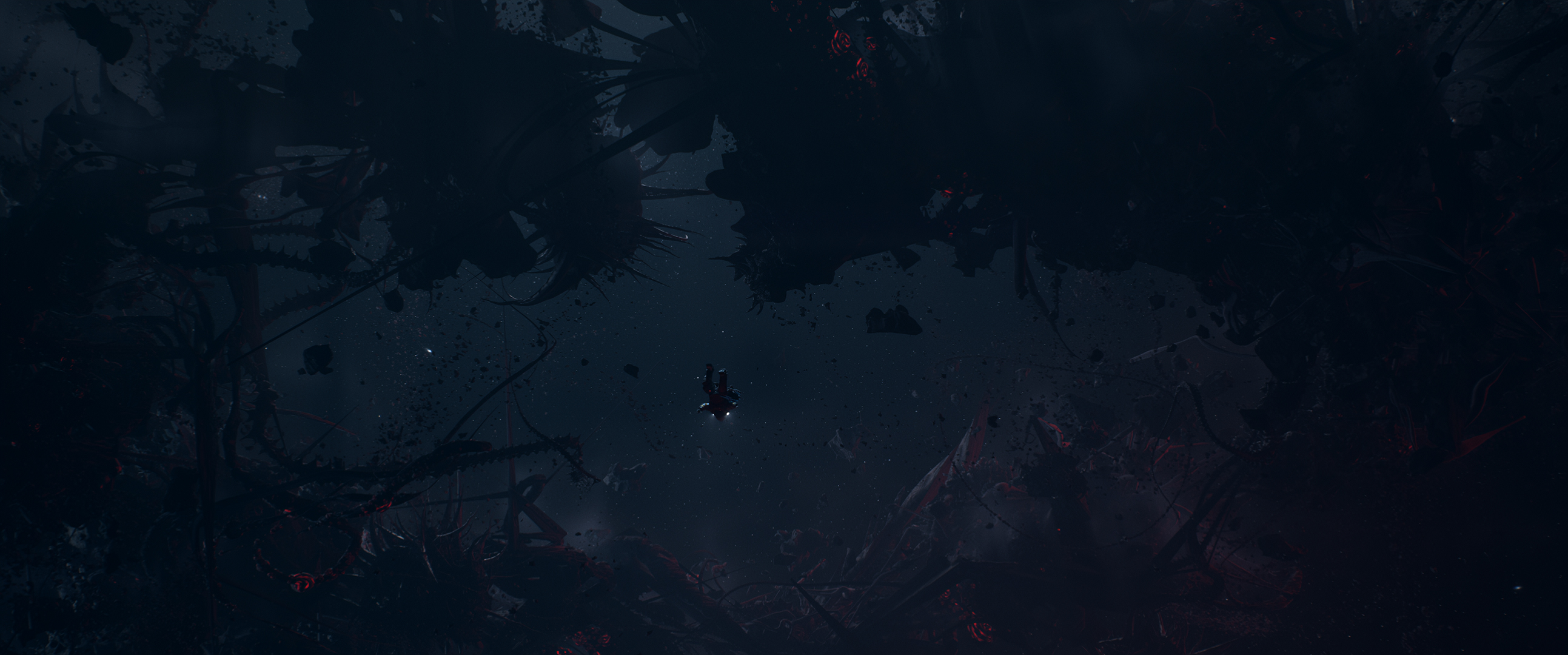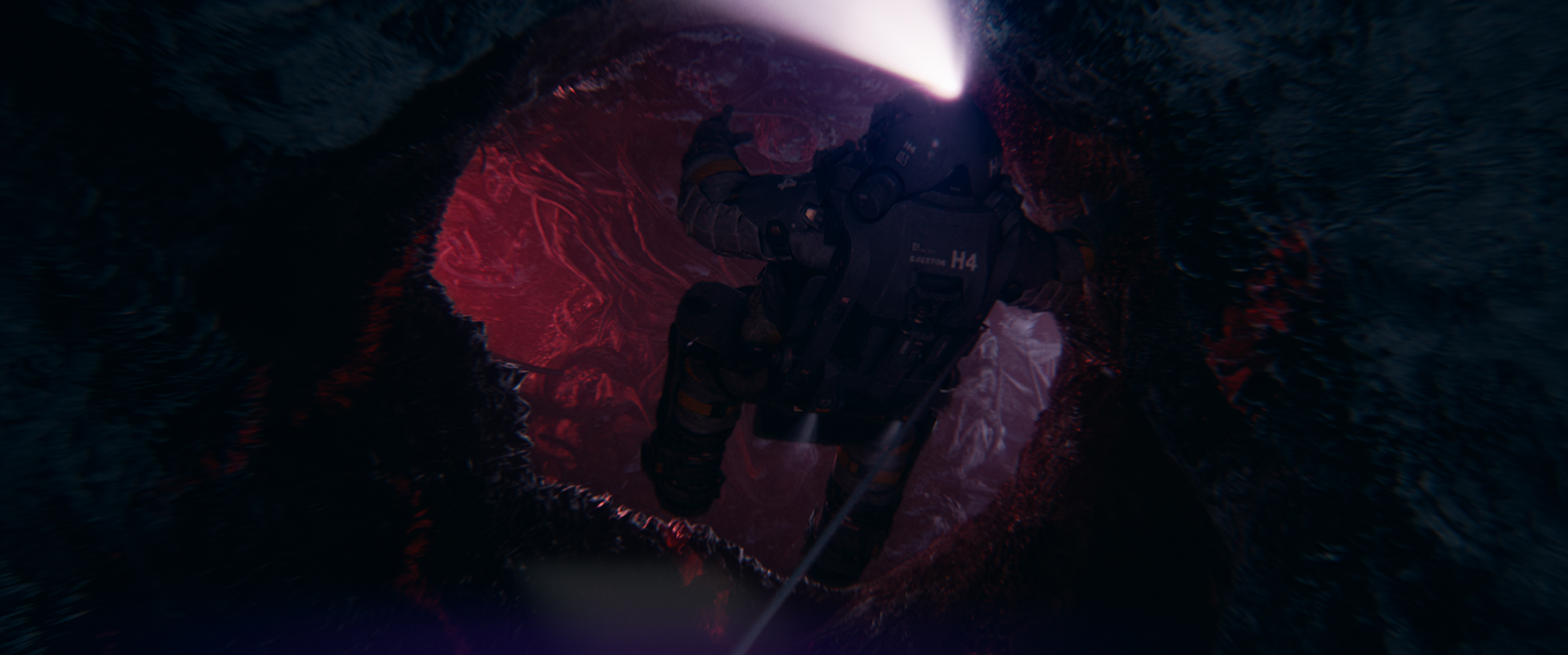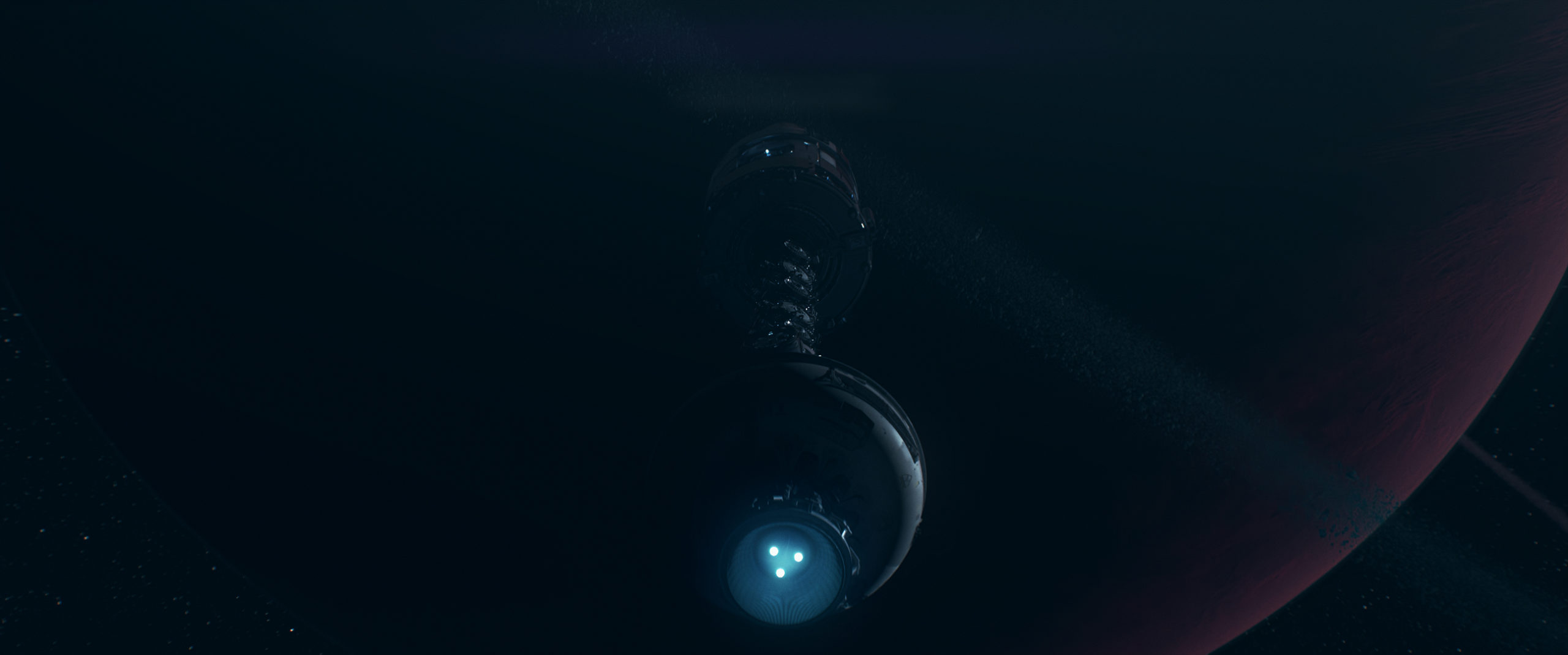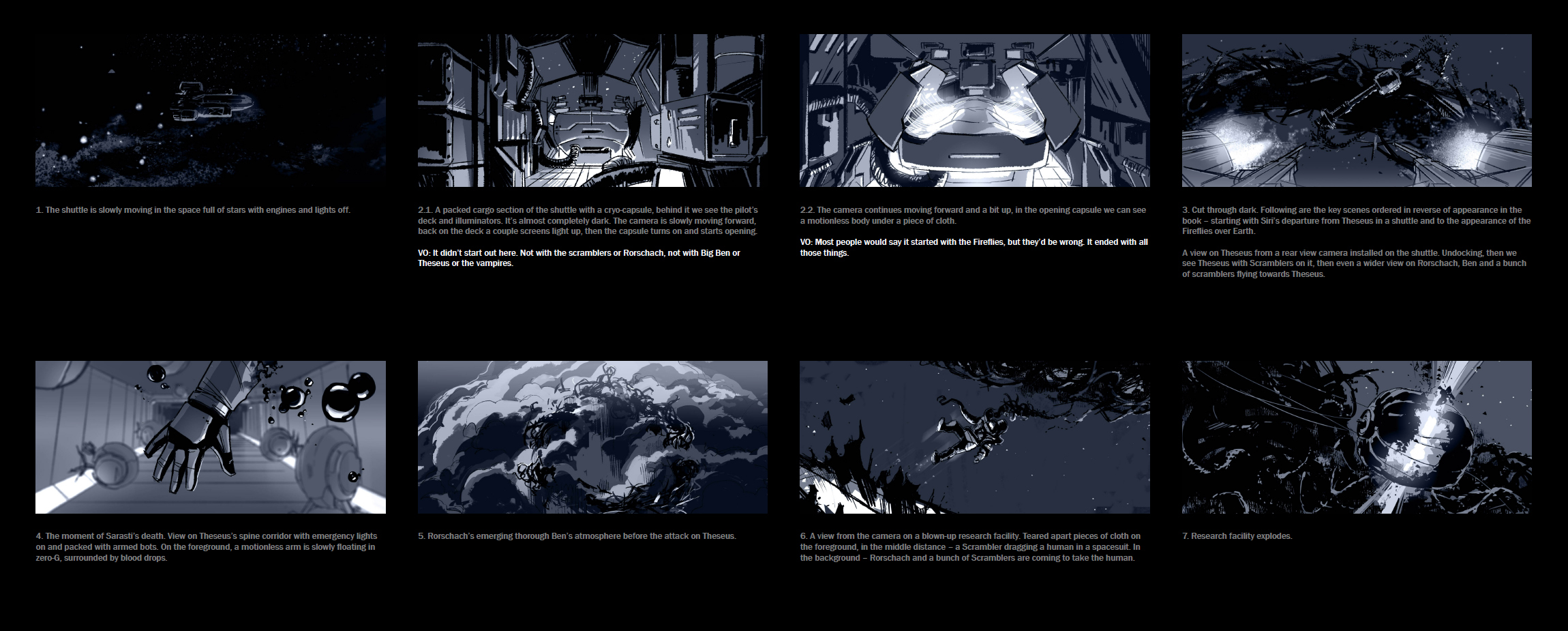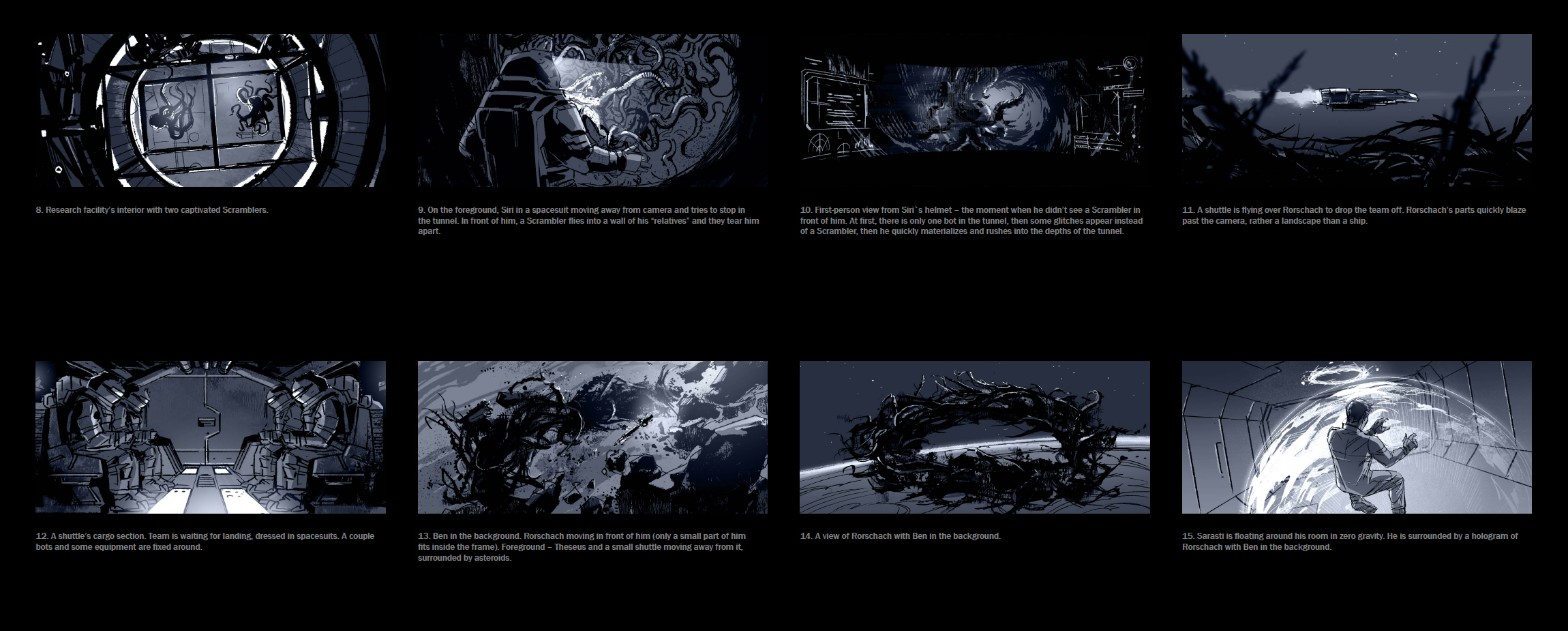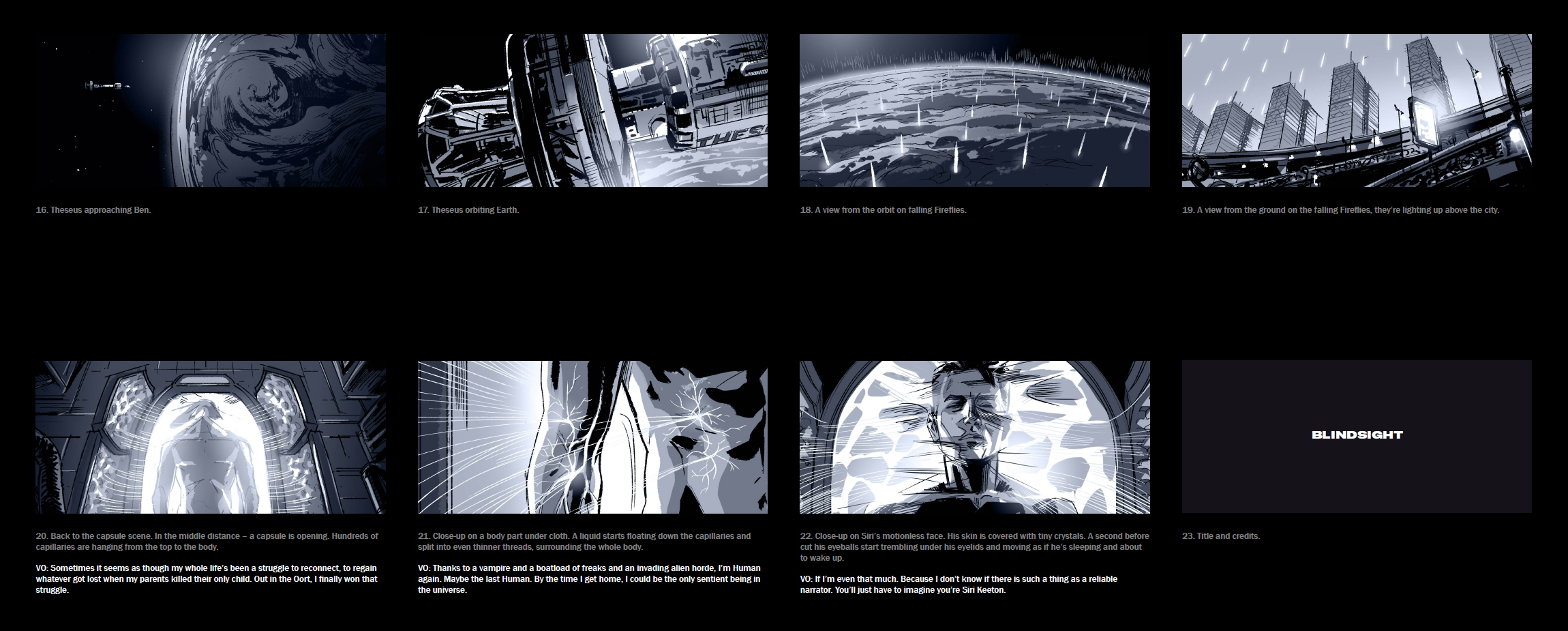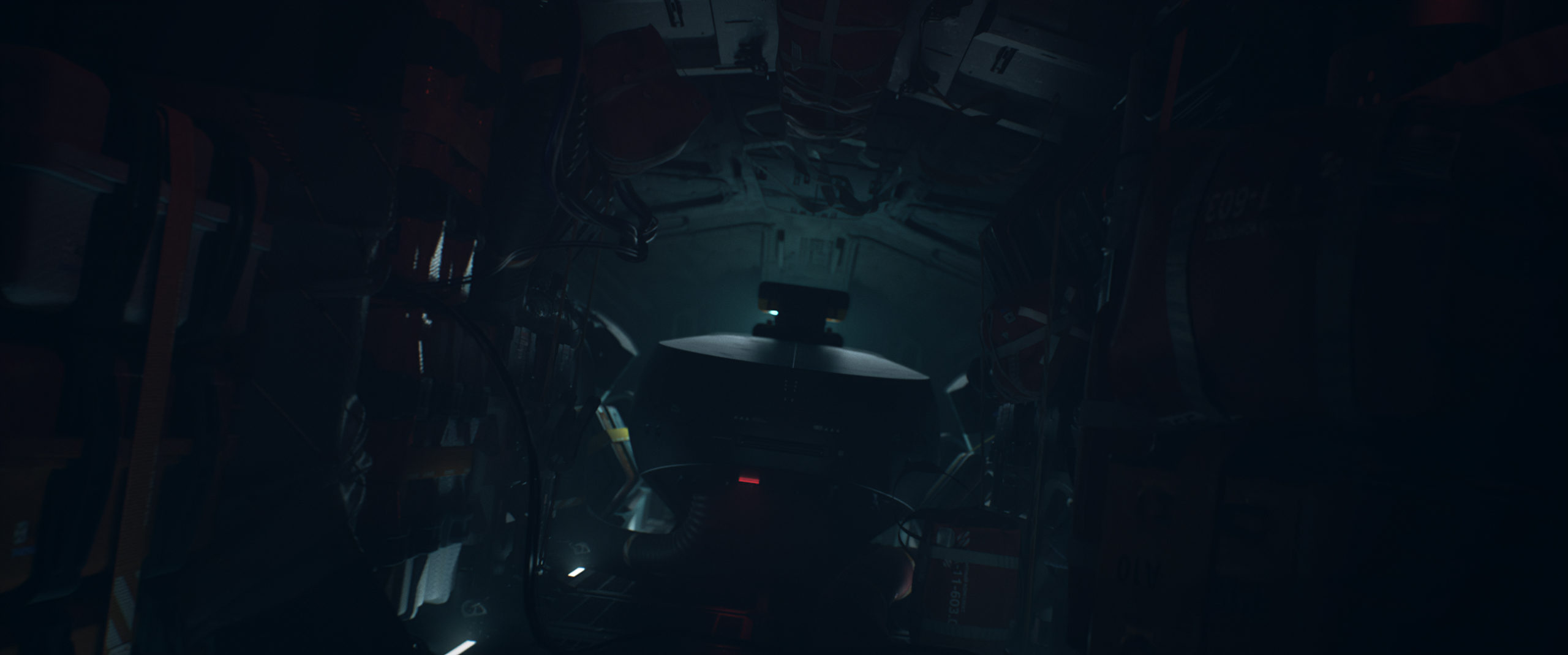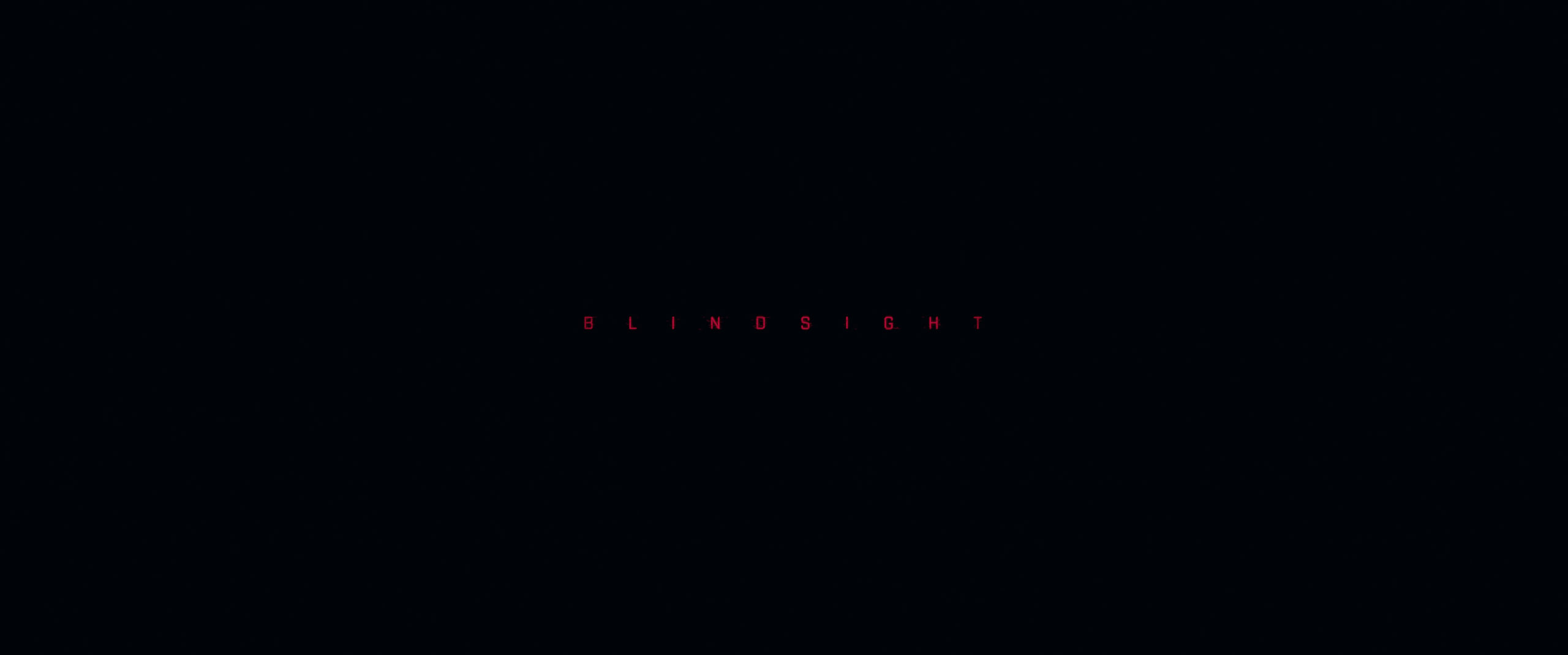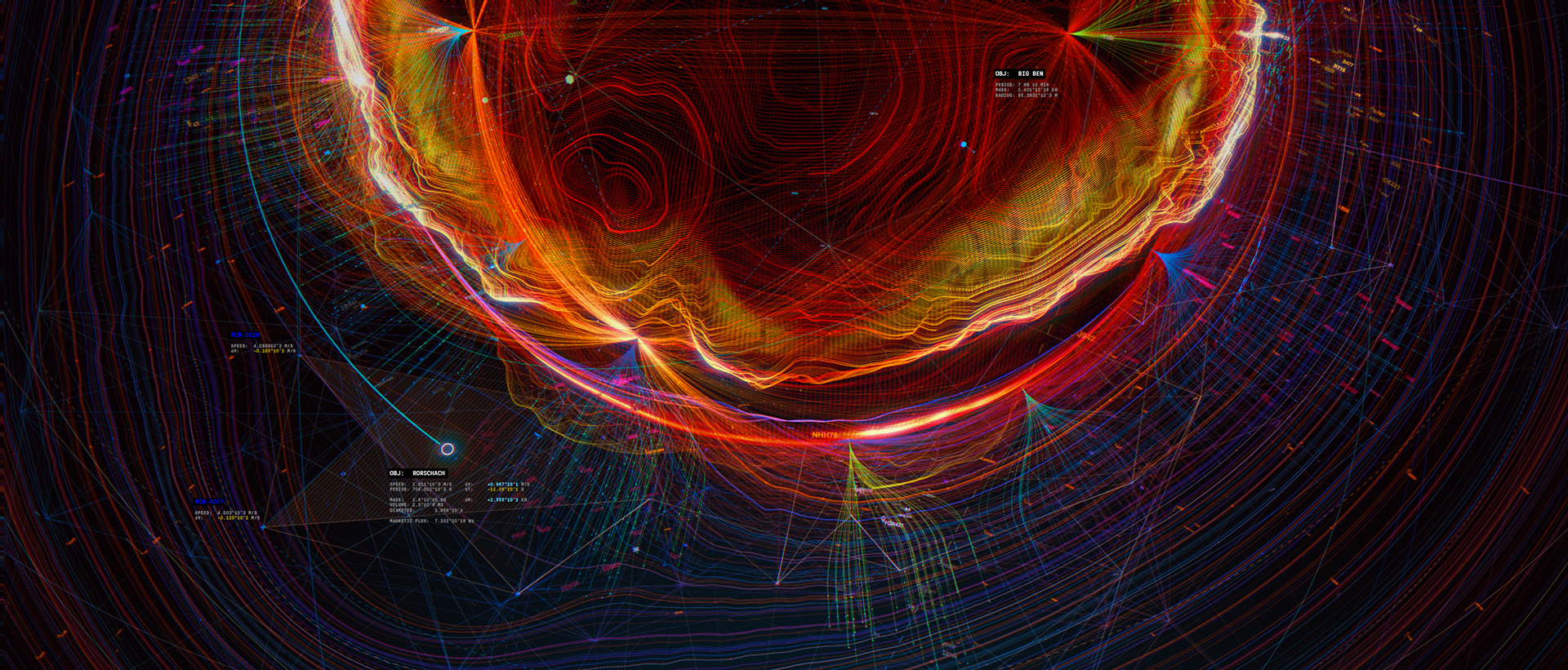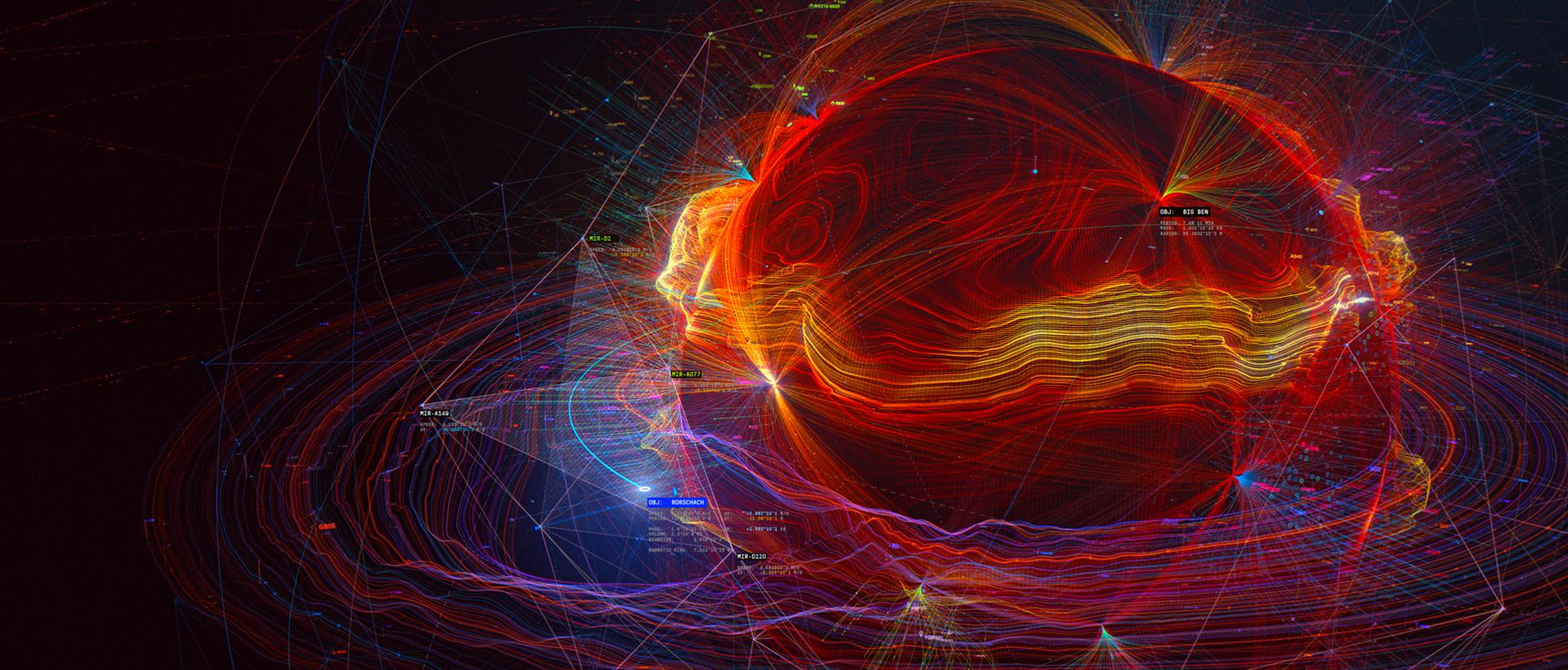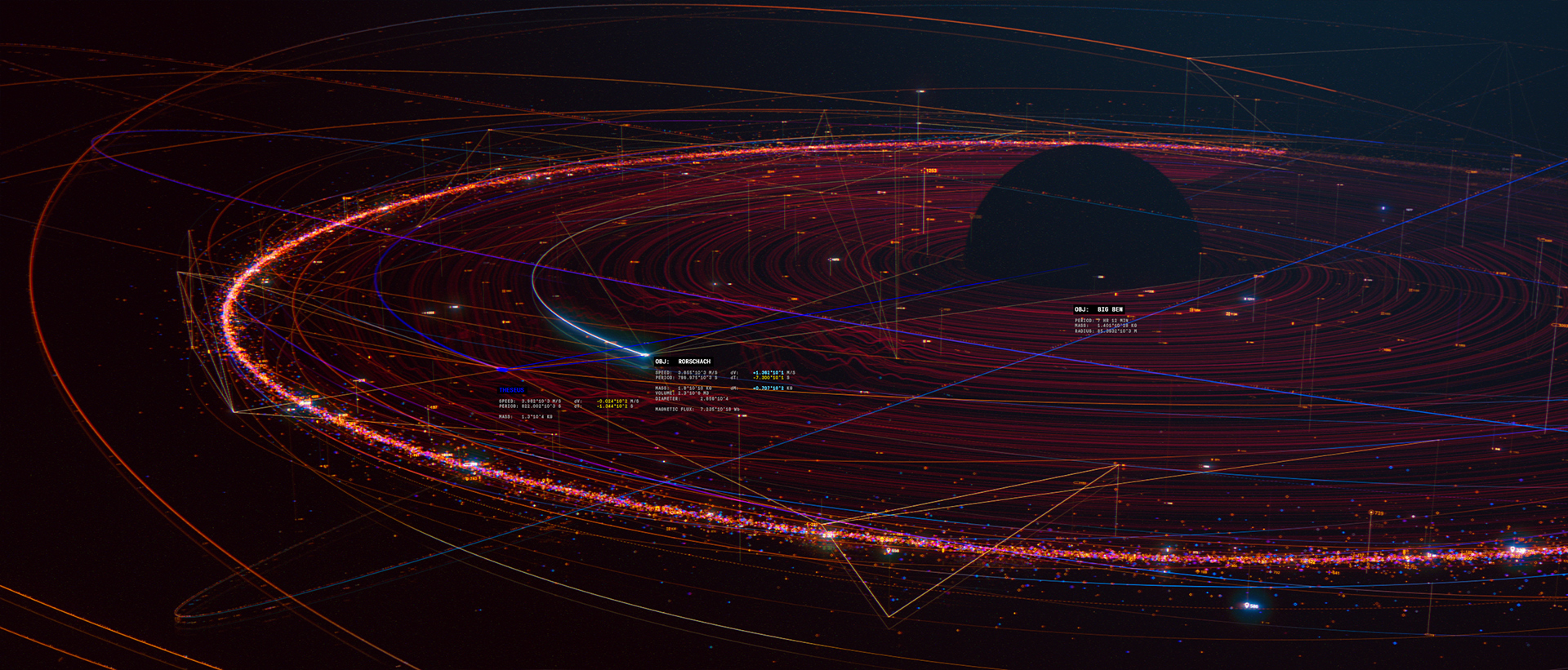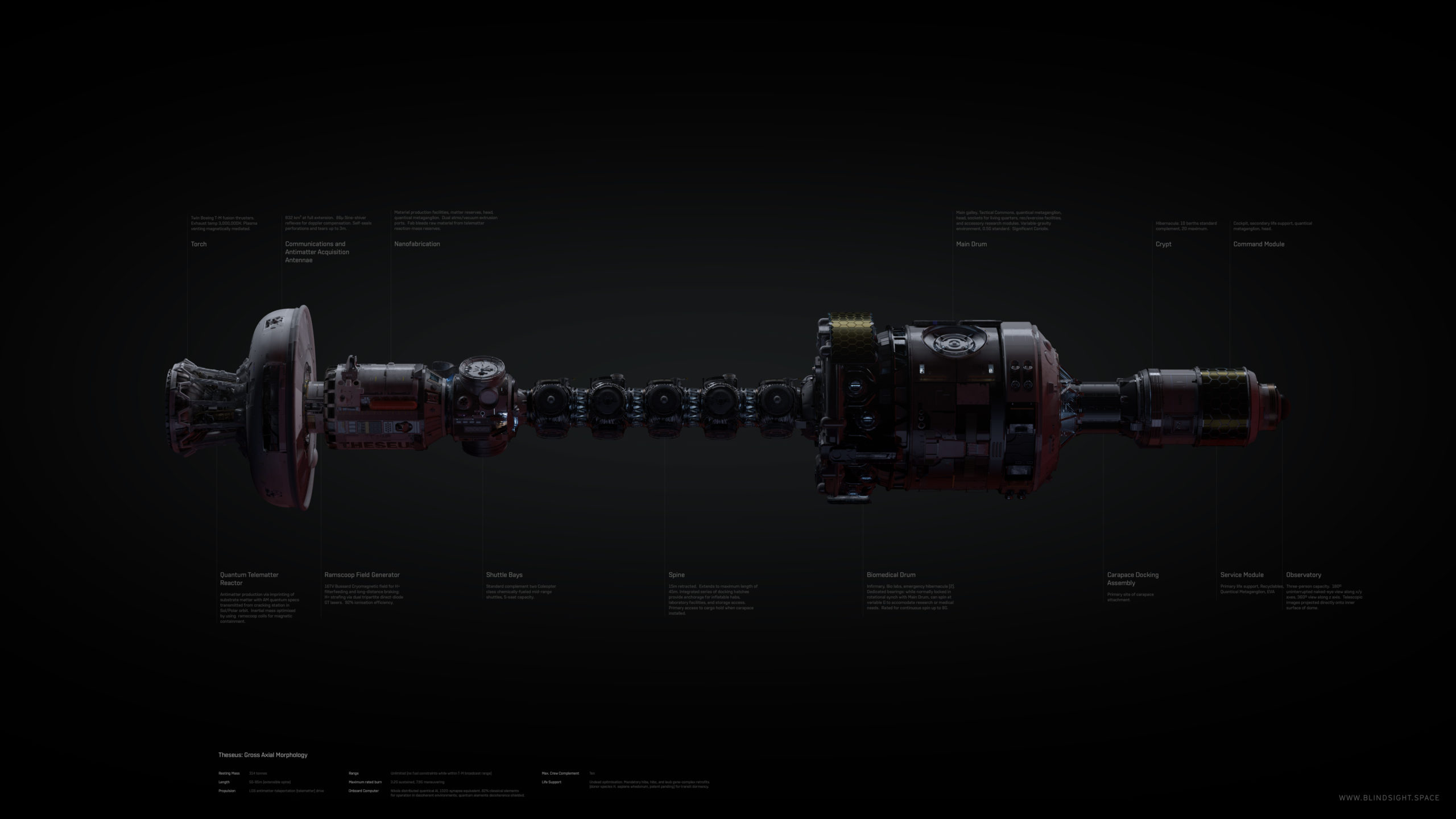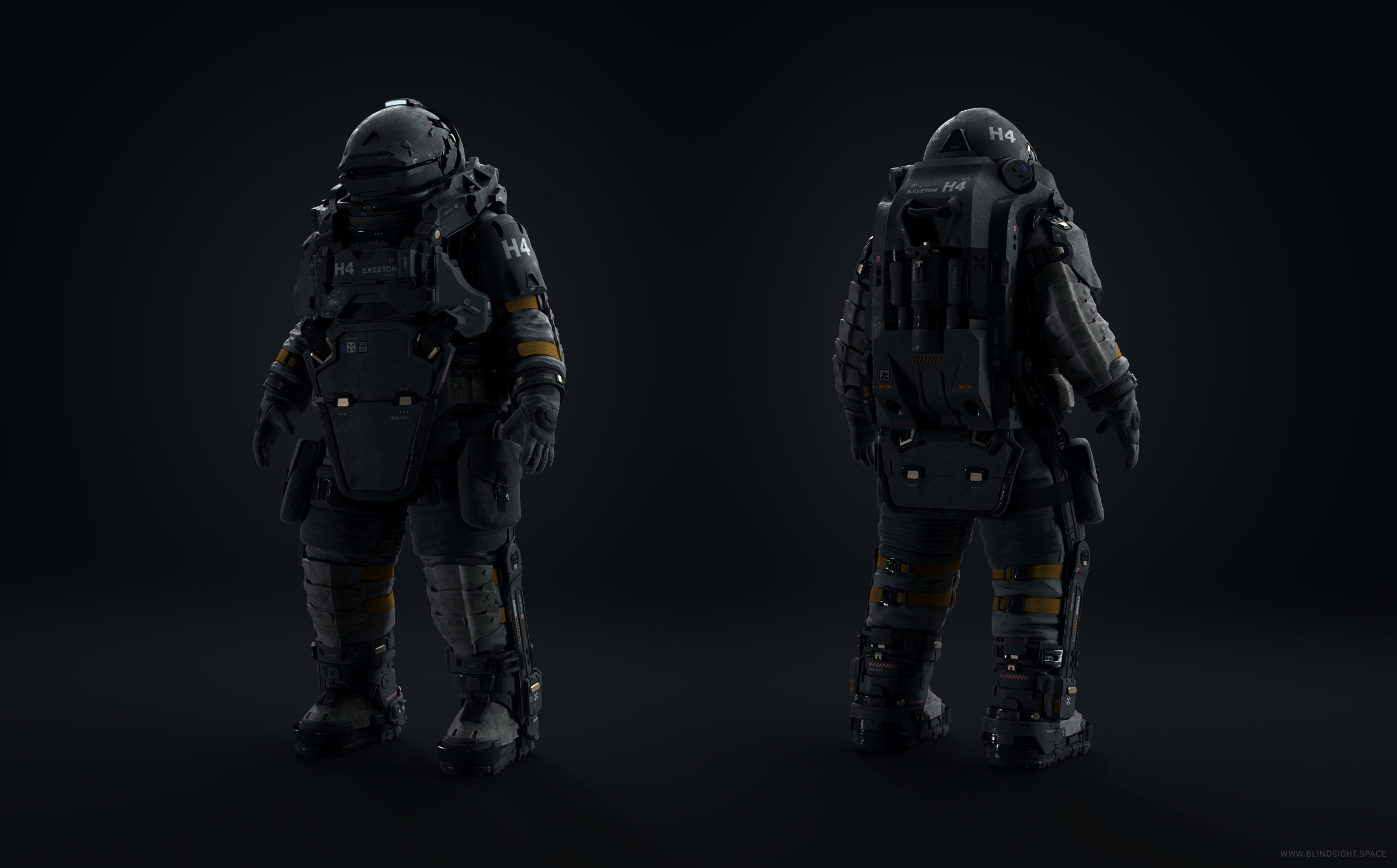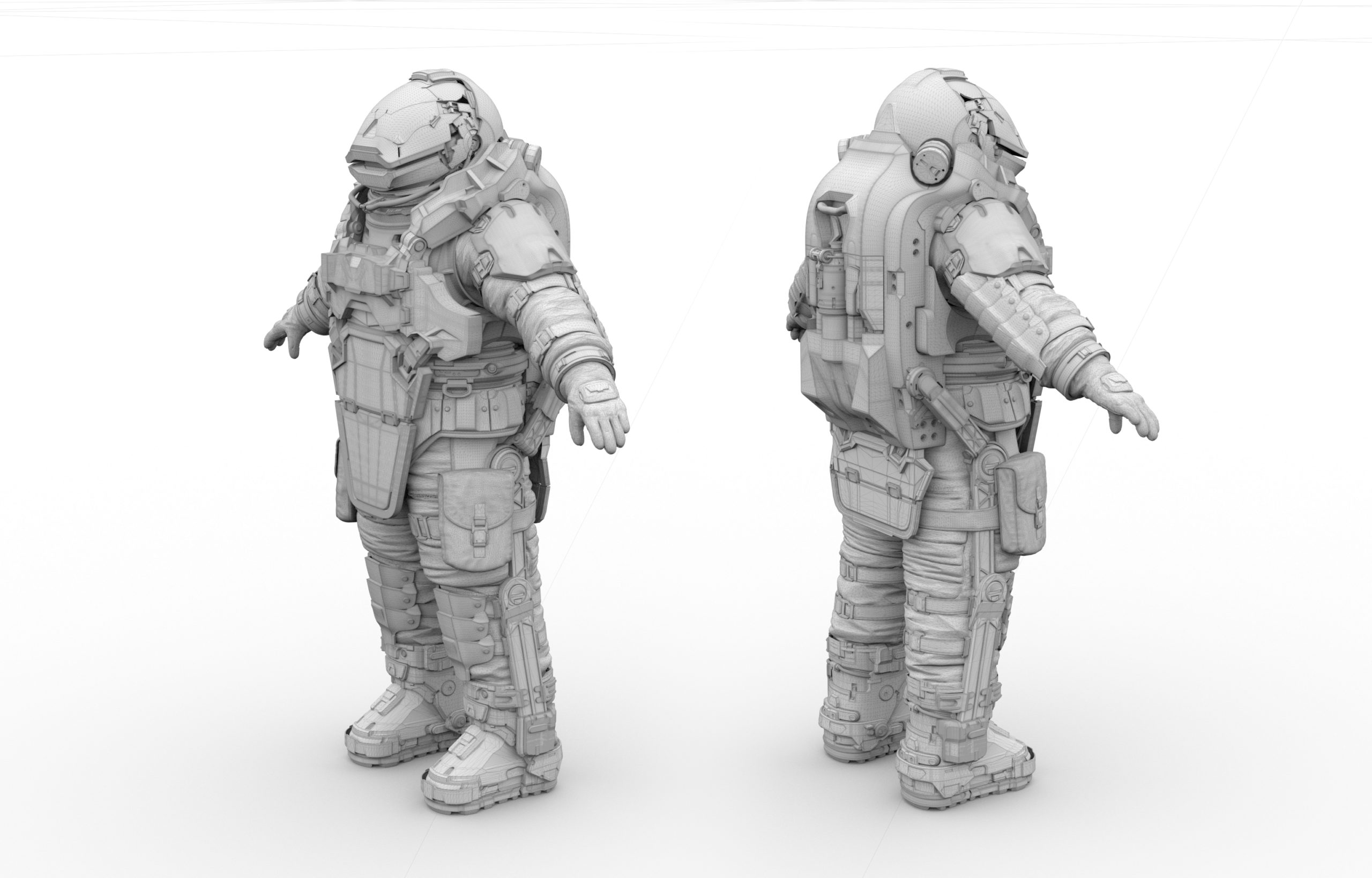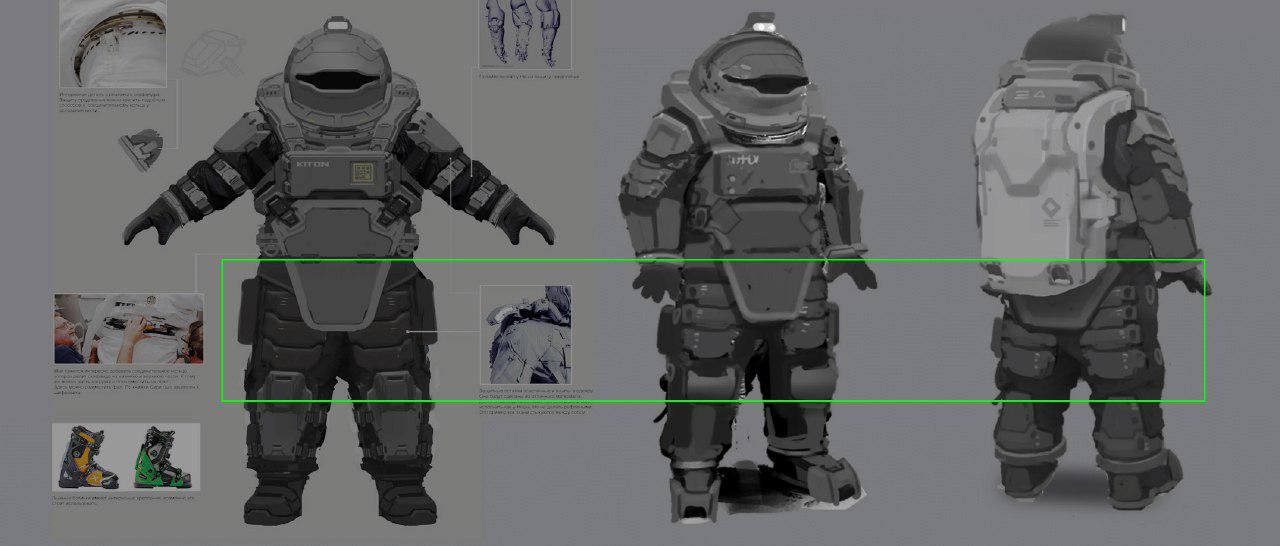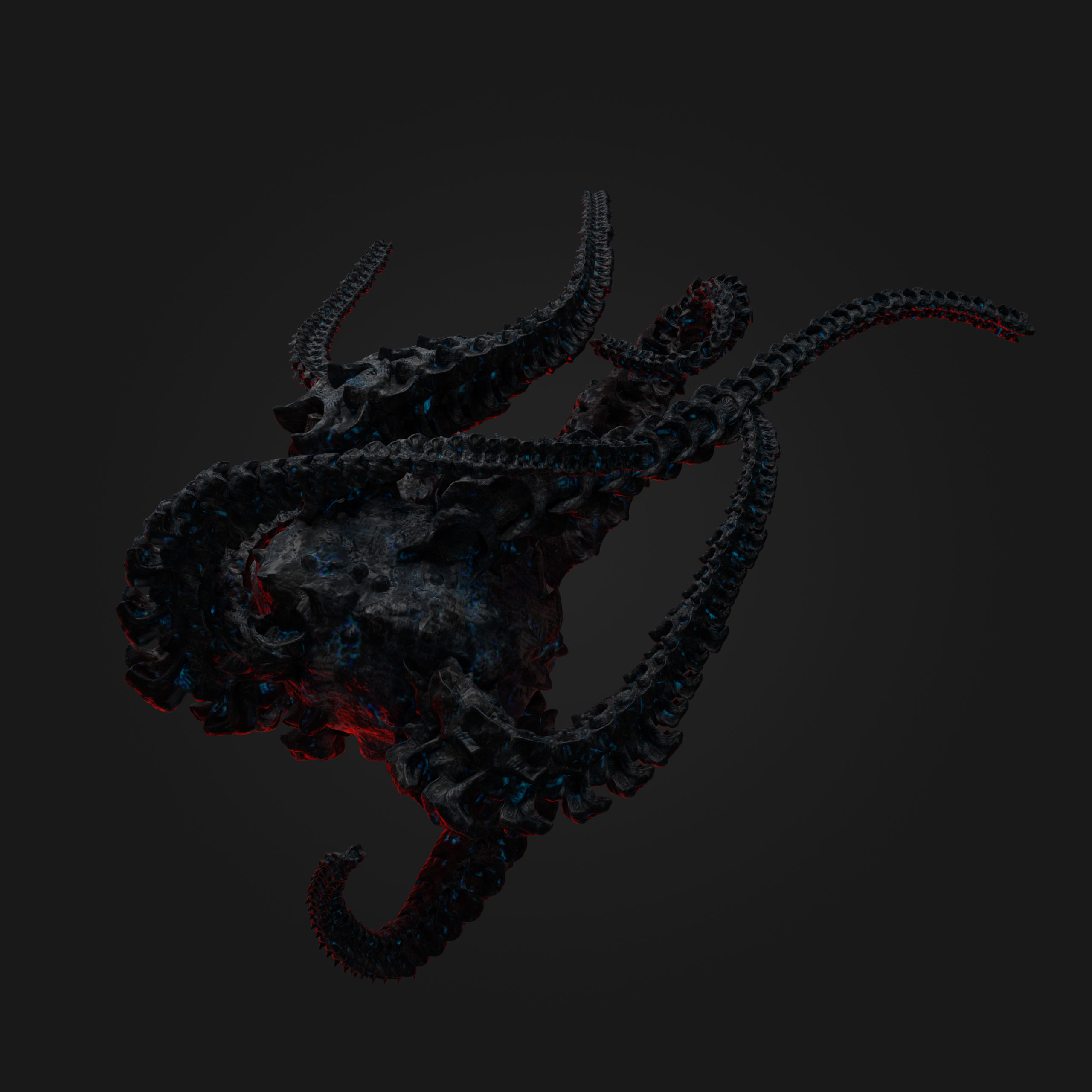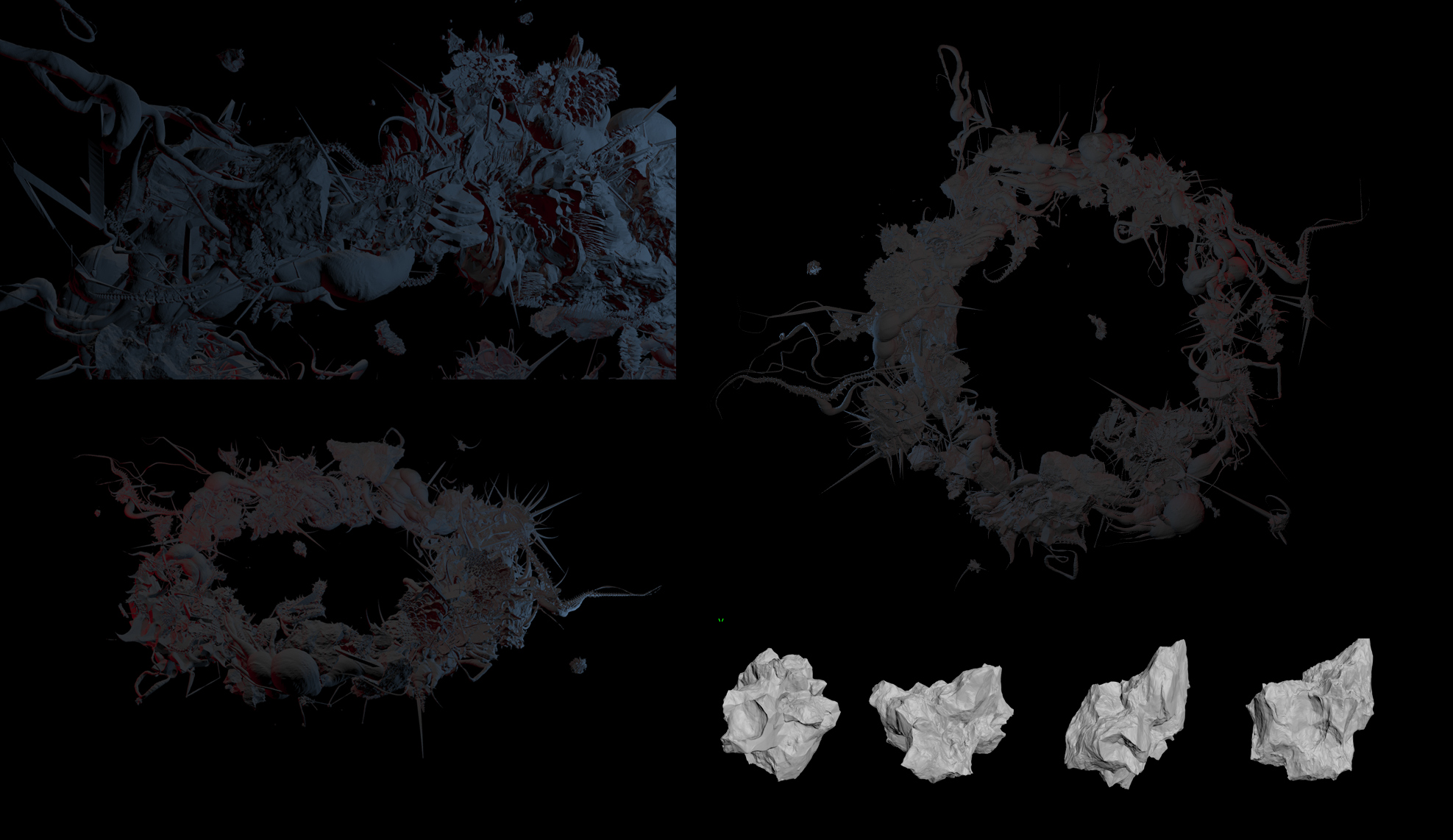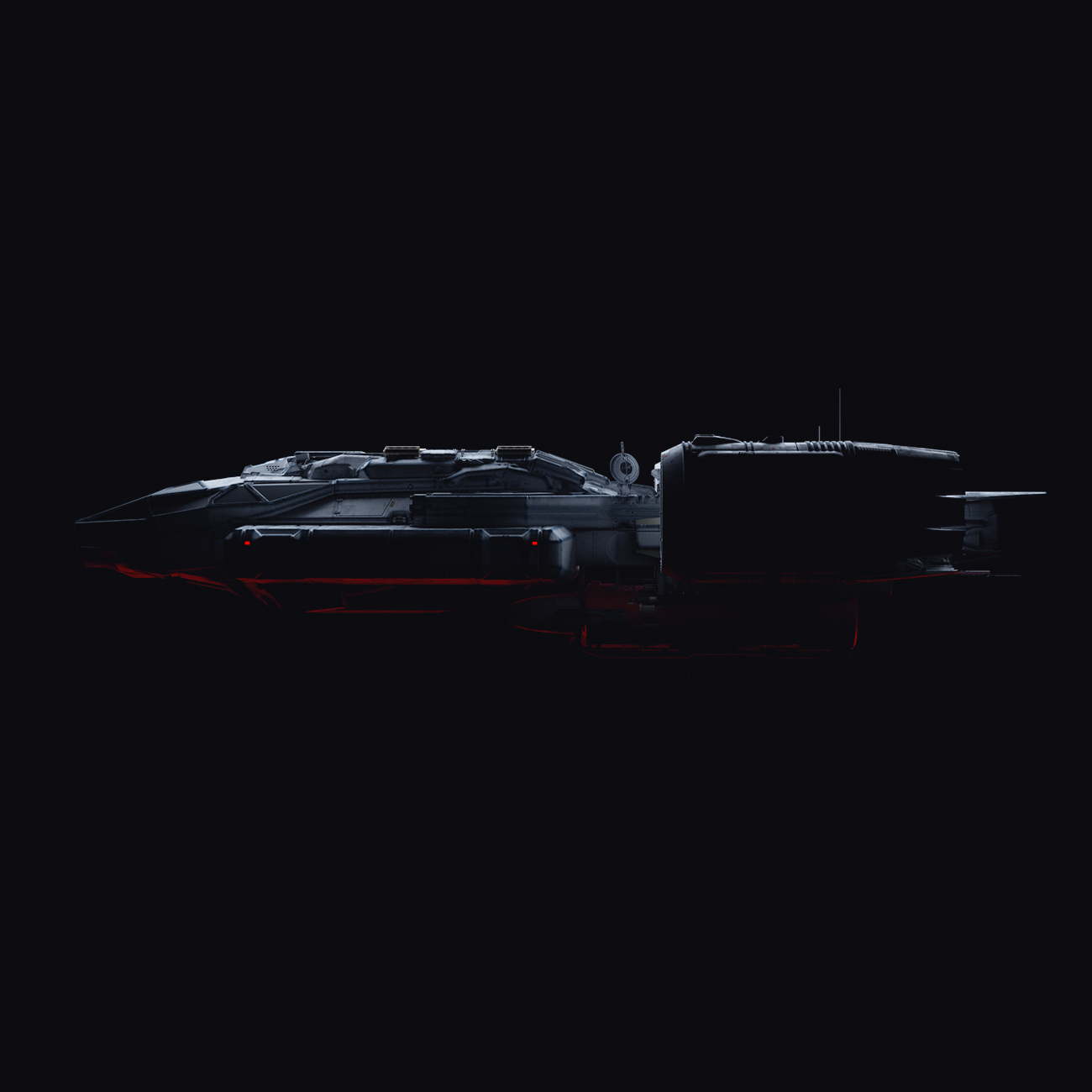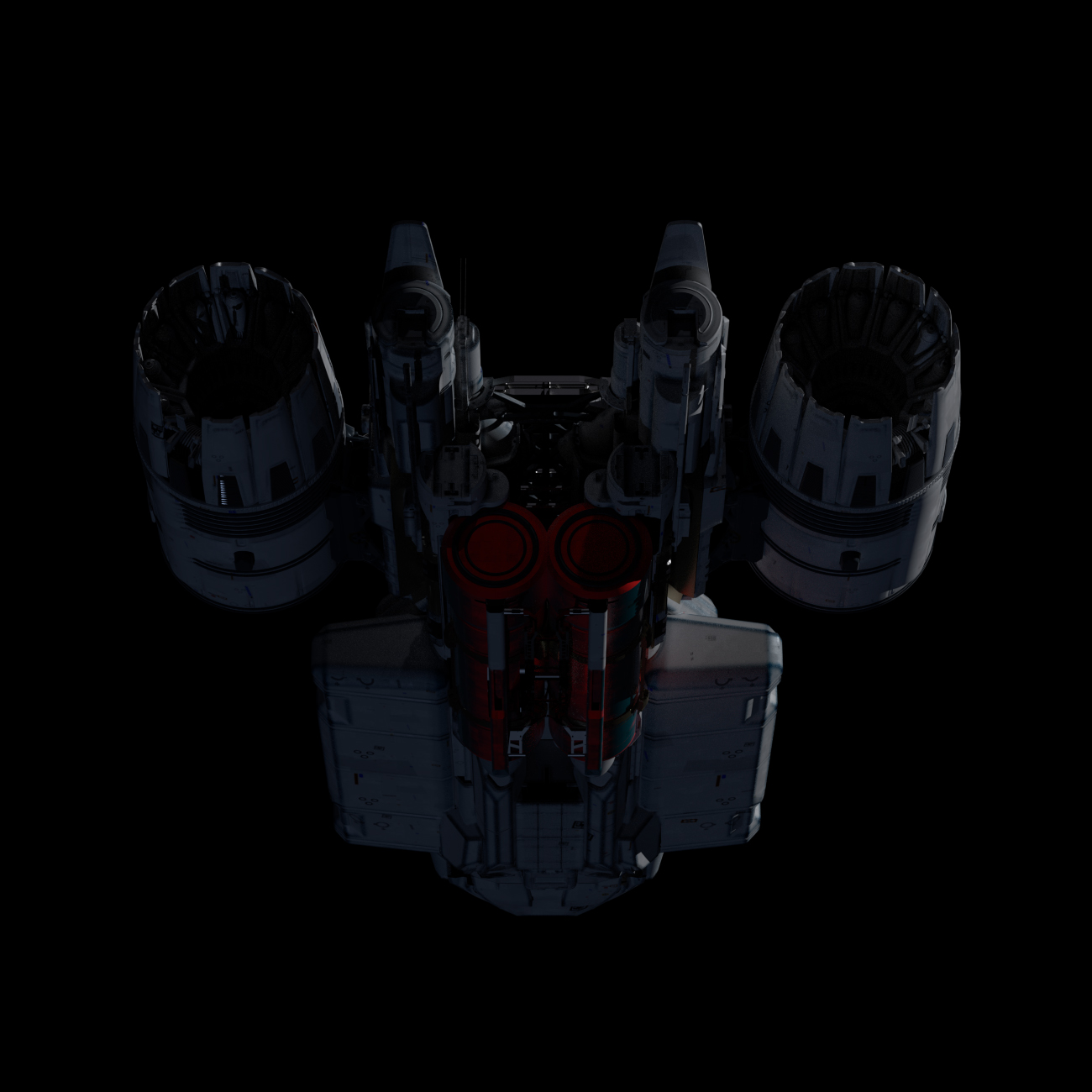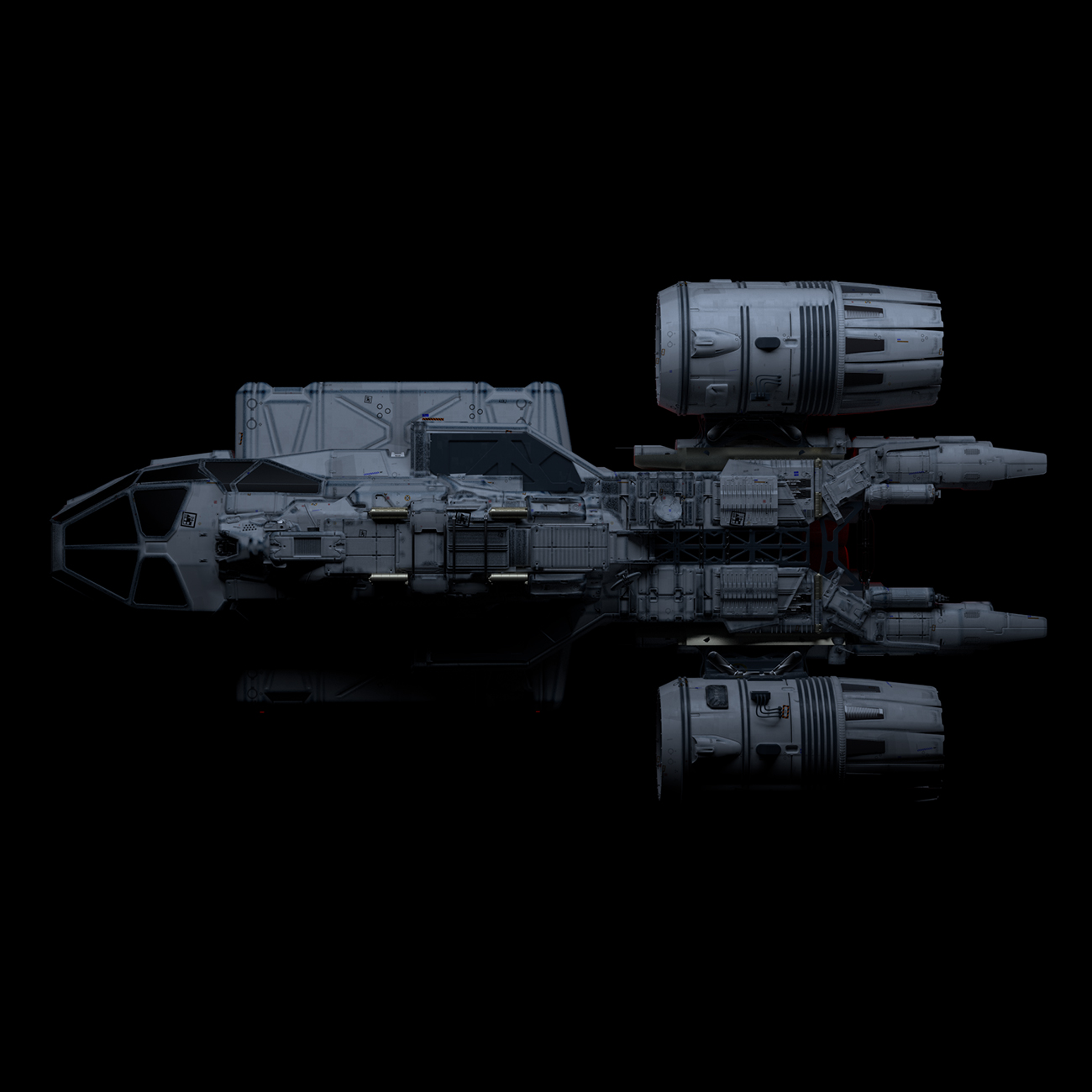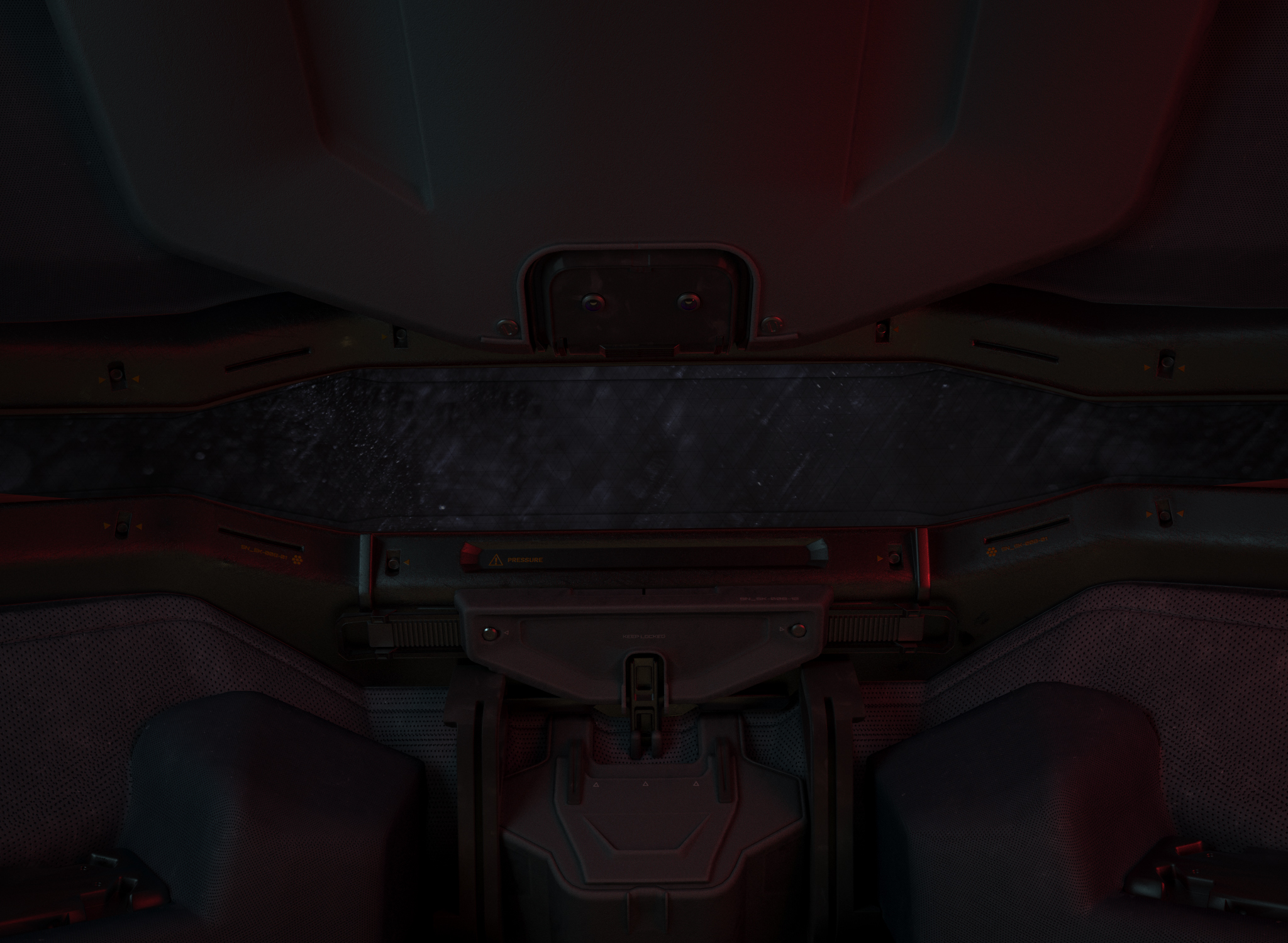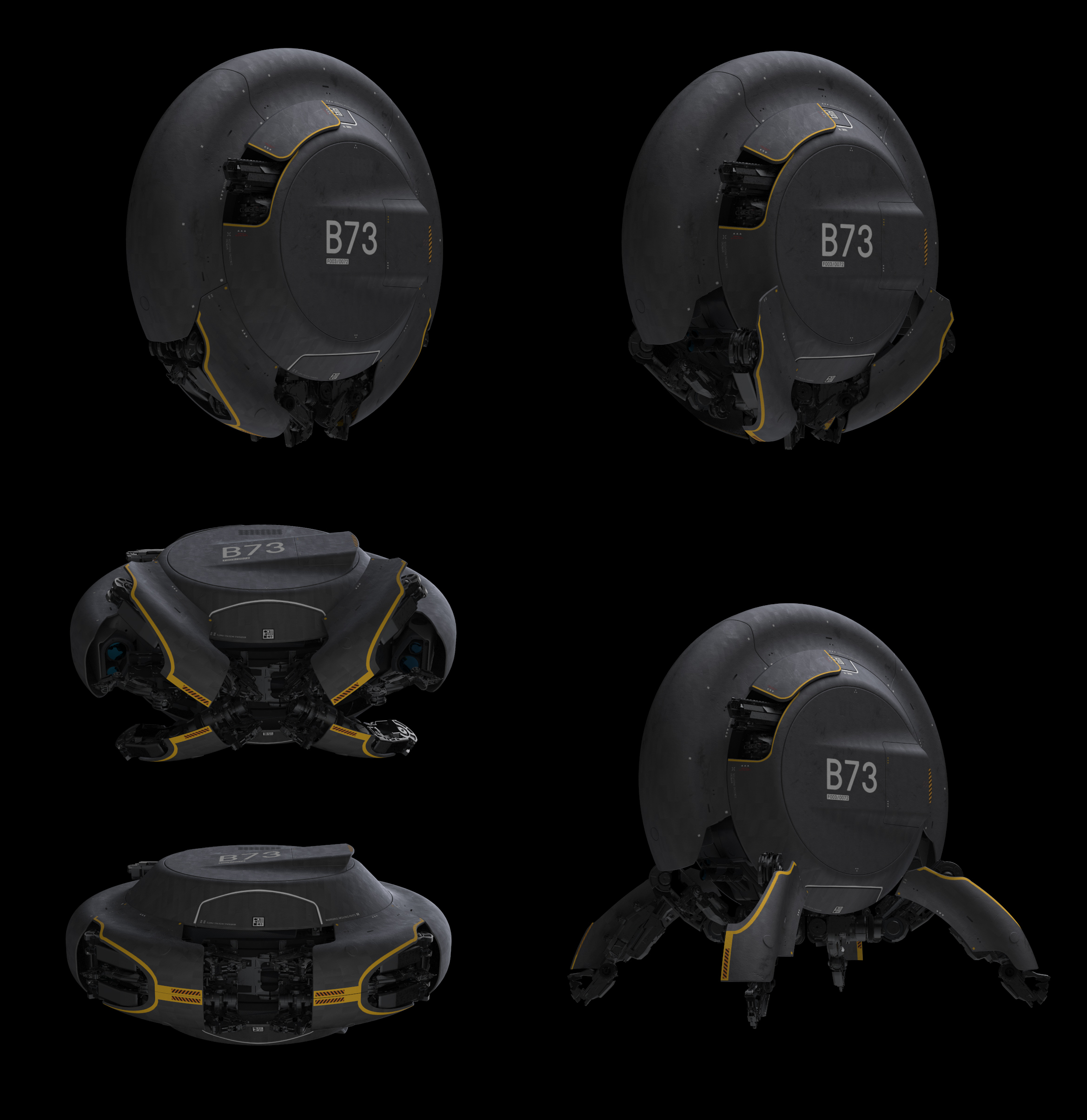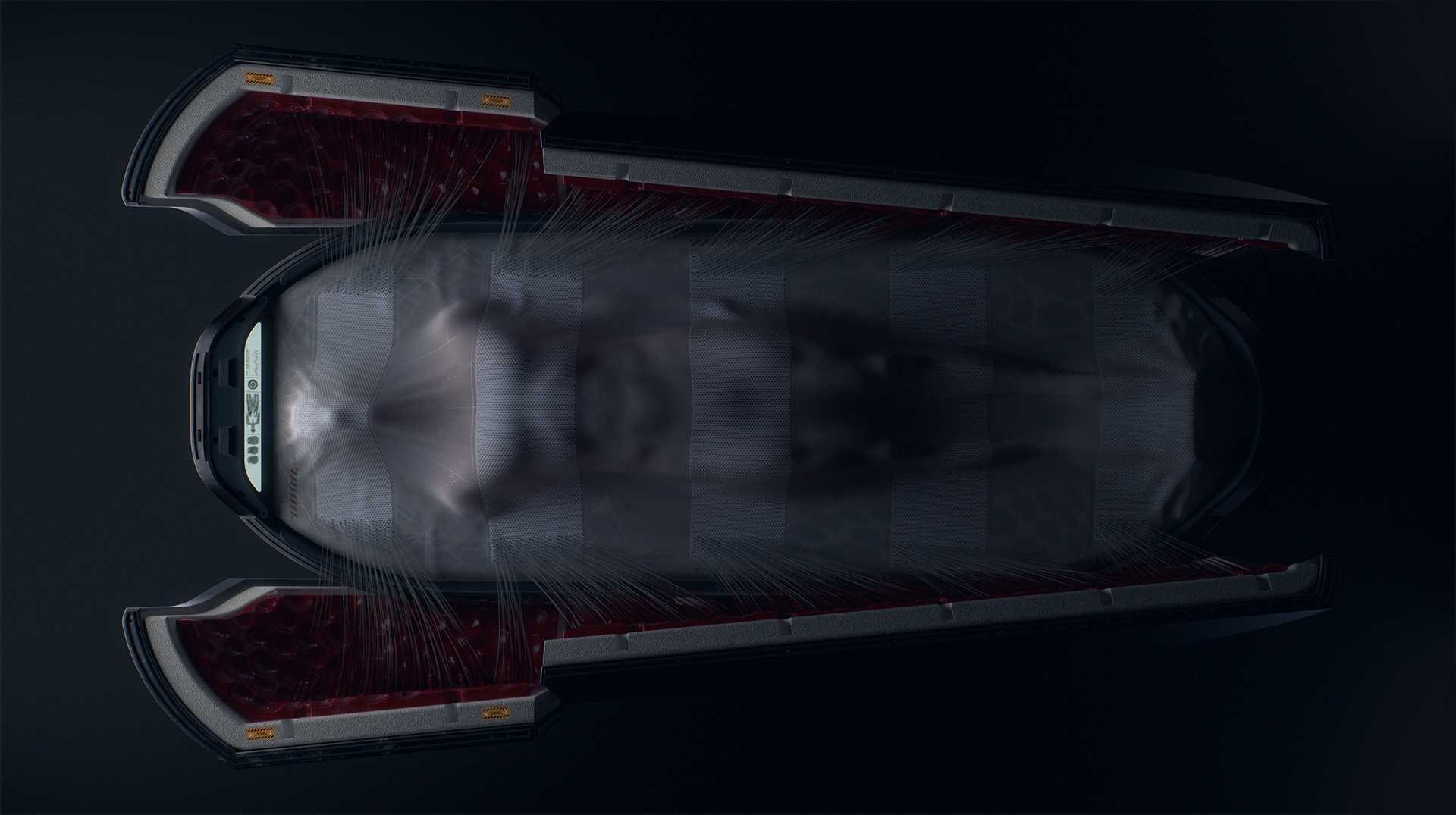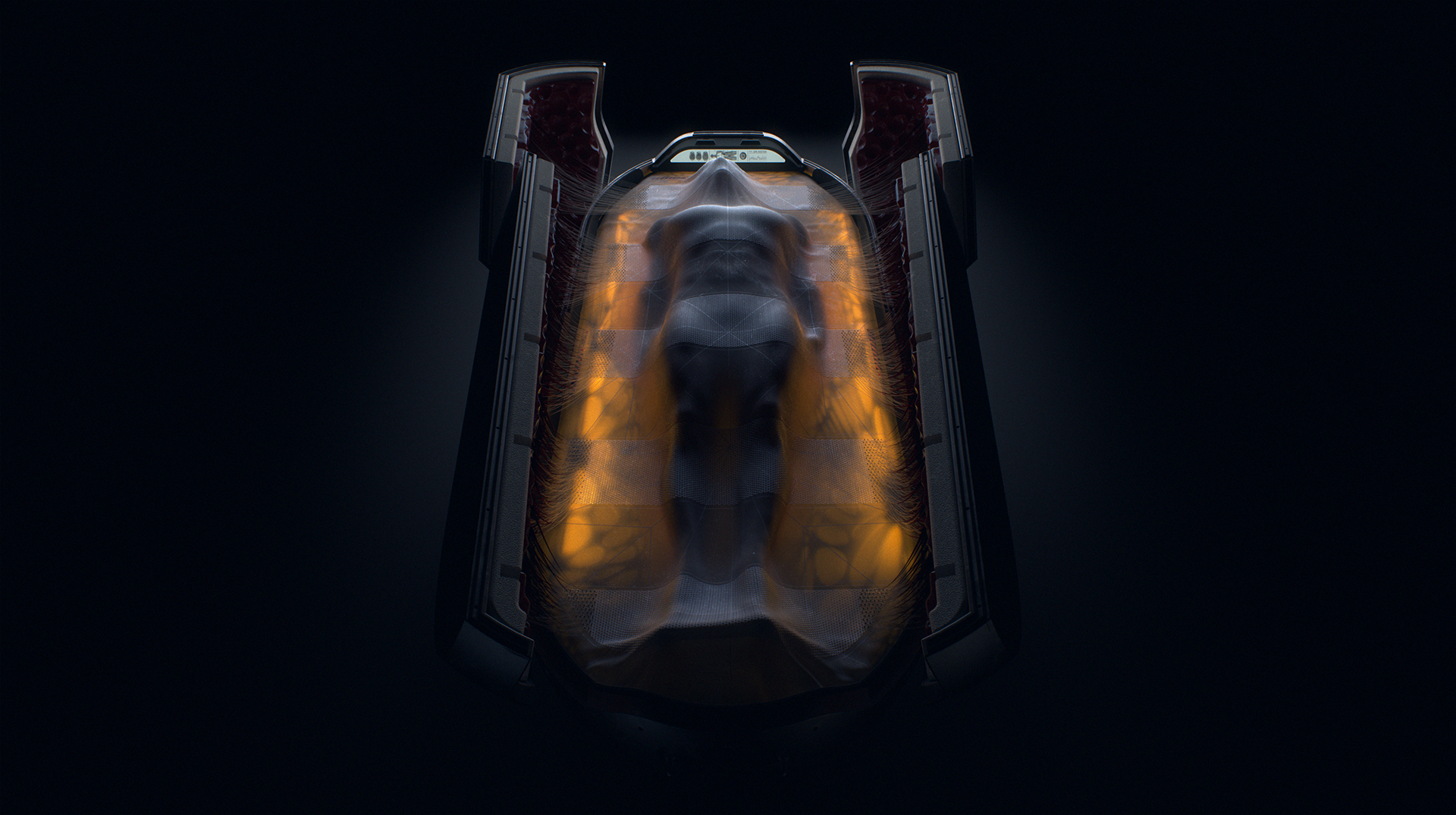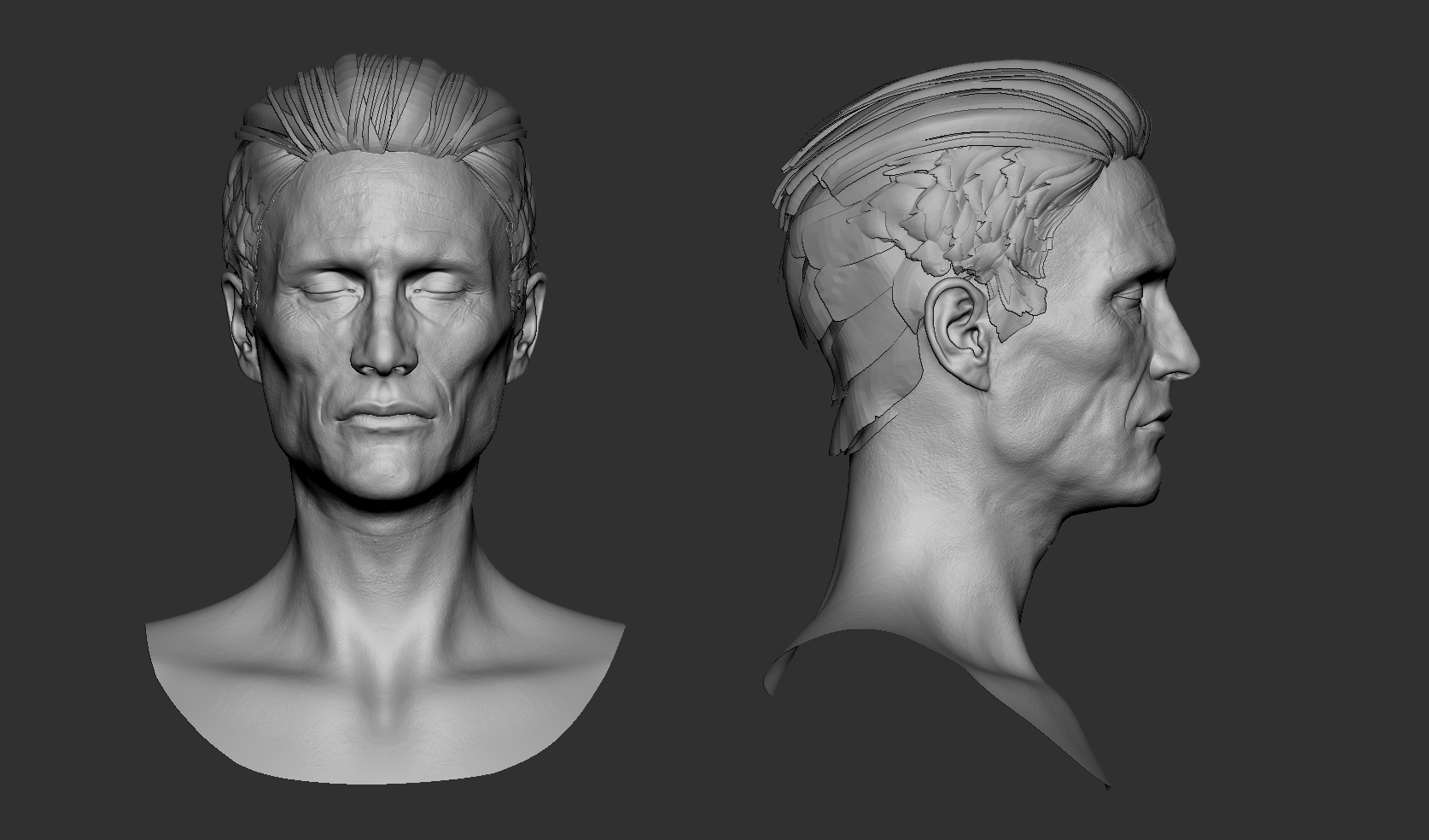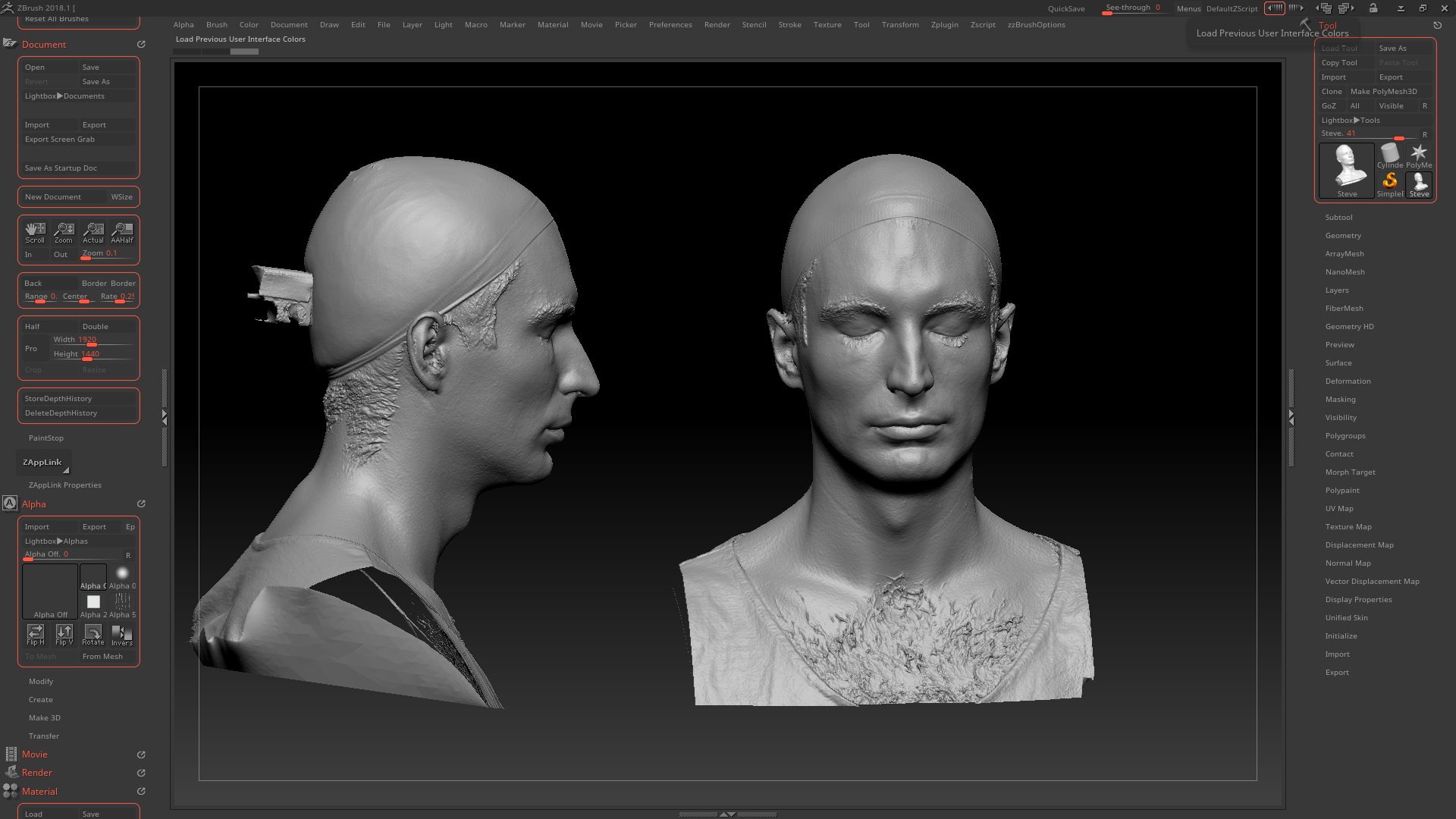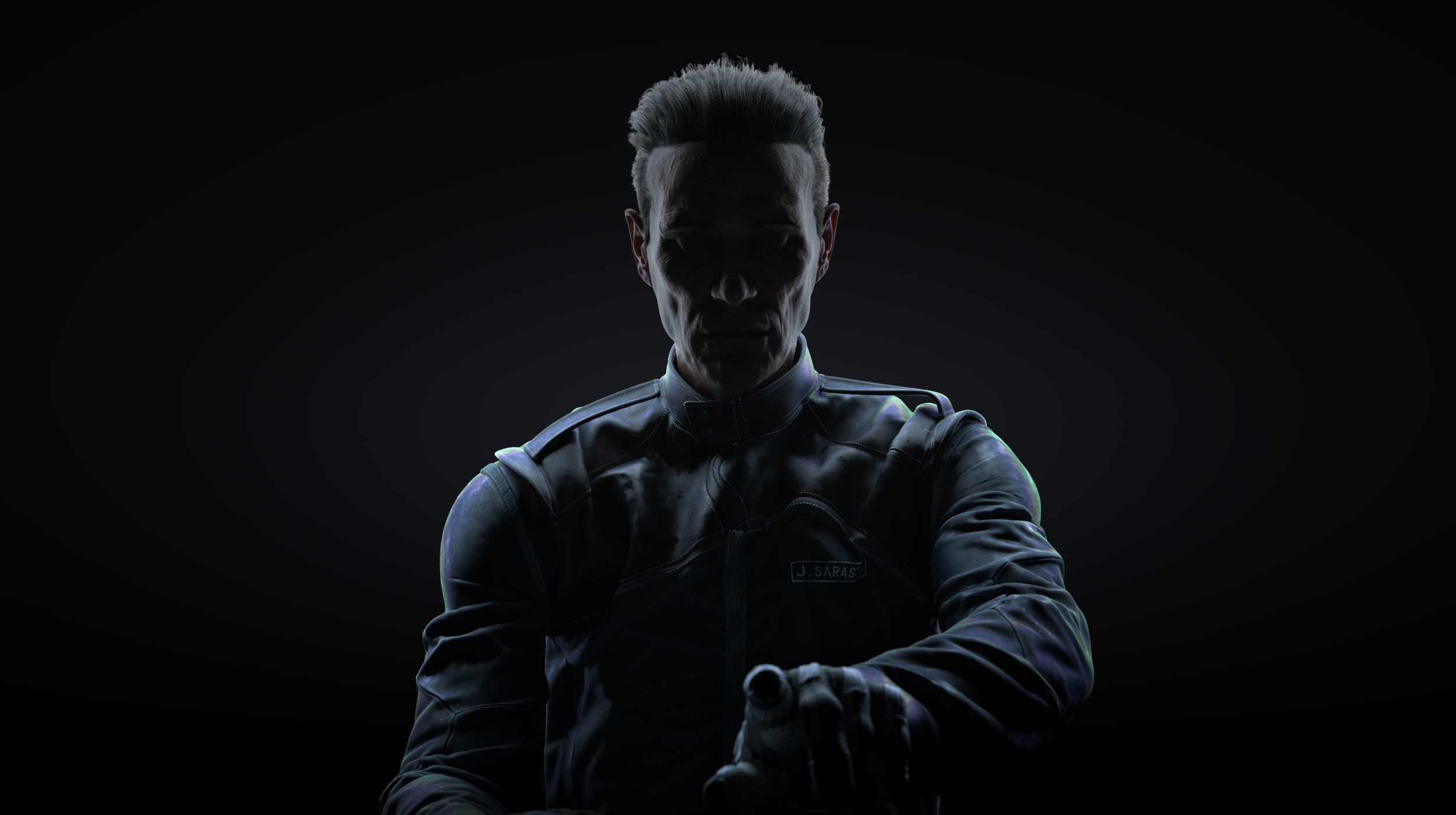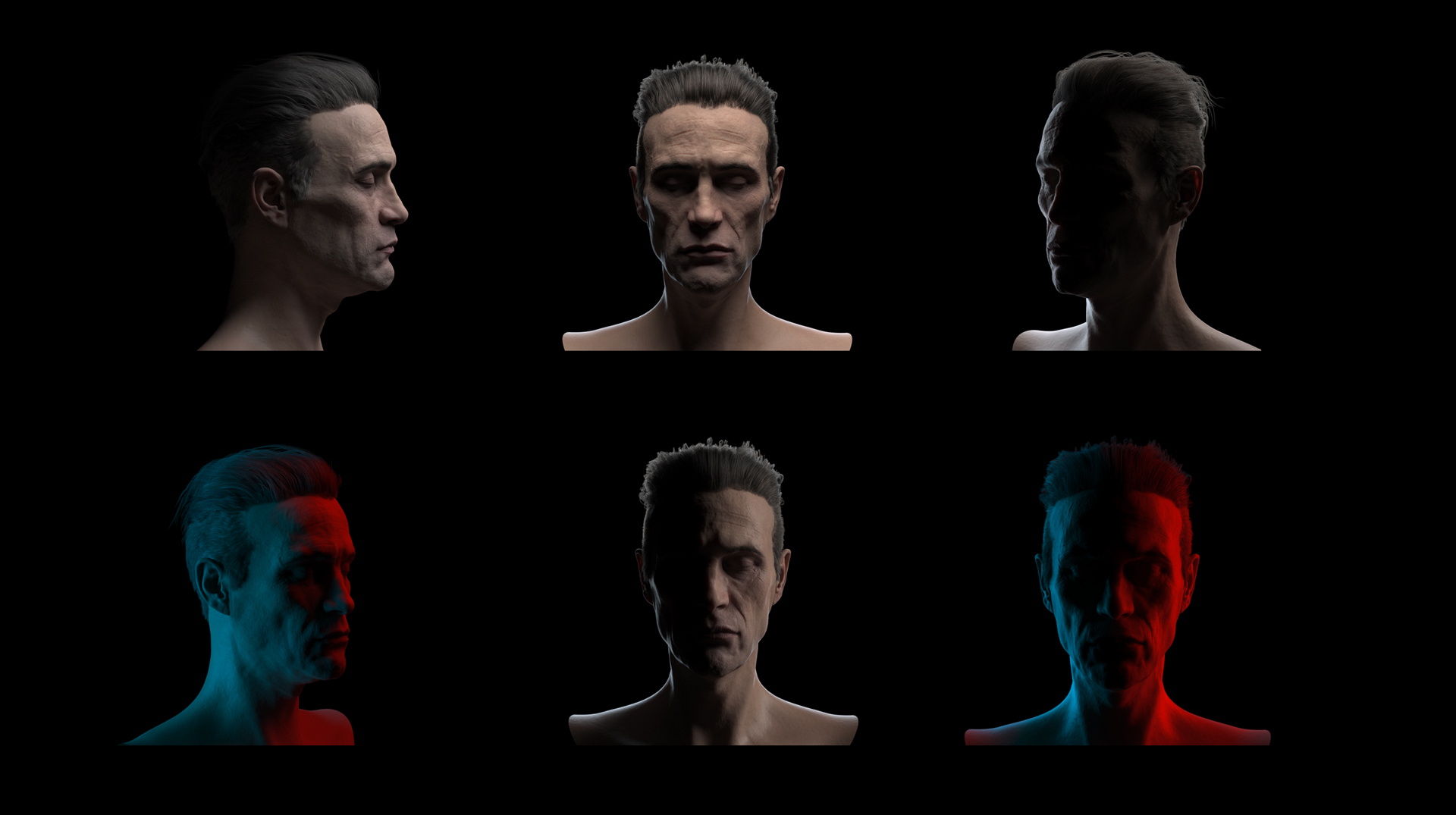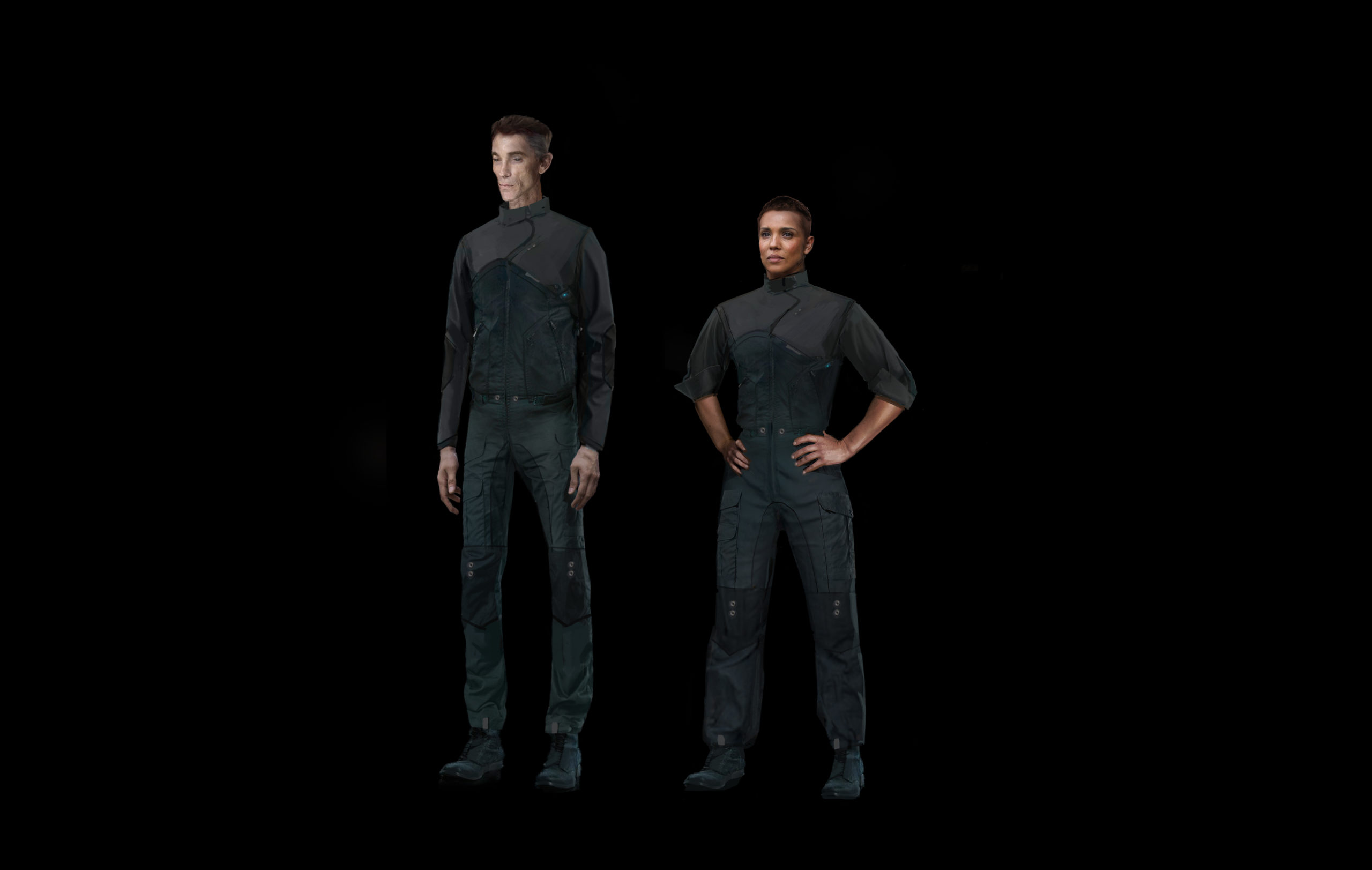Personal project / 2016-2020
BLINDSIGHT
While a cryo capsule resurrects the body of a survived crew member on his long way back to Earth, his wakening mind unwinds memories of the first contact mission.
Description
Blindsight is a short film created by Danil Krivoruchko in collaboration with artists from around the globe between 2016 and 2020. The film is based on the eponymous sci-fi novel by Peter Watts. This is a non-commercial self-funded project.
Please check the supporting site covering the film’s creation process in-depth.
Process
I read Blindsight for the first time in 2009, when it was translated into Russian. It enjoyed cult status in the 3D-design community at the time, and a friend of mine recommended it to me. I was blown away by the amount of technical, scientific, and psychological details Peter Watts packed into the novel, while still keeping it a tense and fascinating read.
It felt like it contained enough excellent, thought-provoking ideas for five books, rather than just one. The text was so vivid that reading it felt, to me, like watching a movie inside my head. However, I had no ambitions to make this movie I imagined, since that was obviously an impossible task, so I patiently waited for someone in Hollywood to pick up the story and make it into a movie.
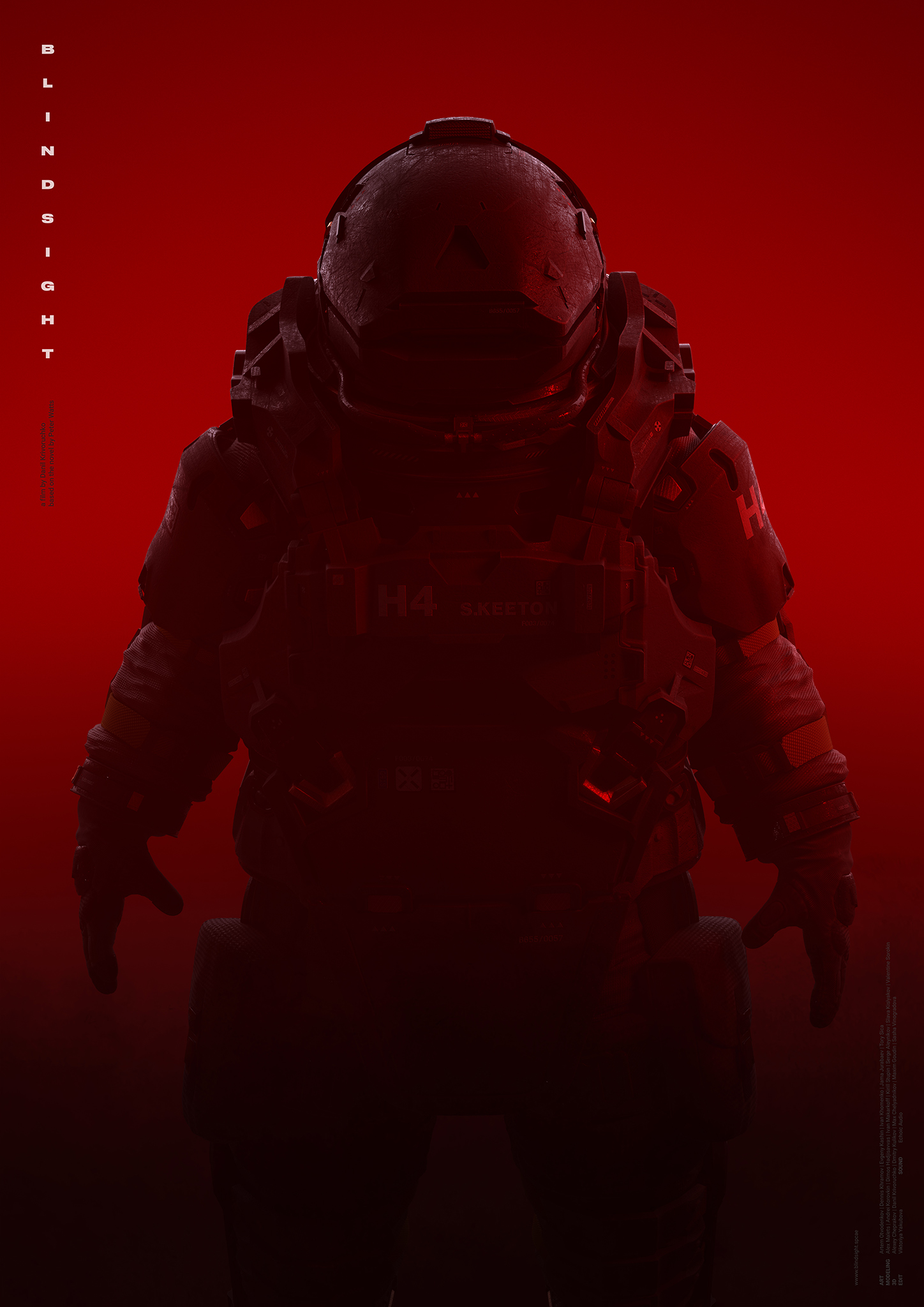
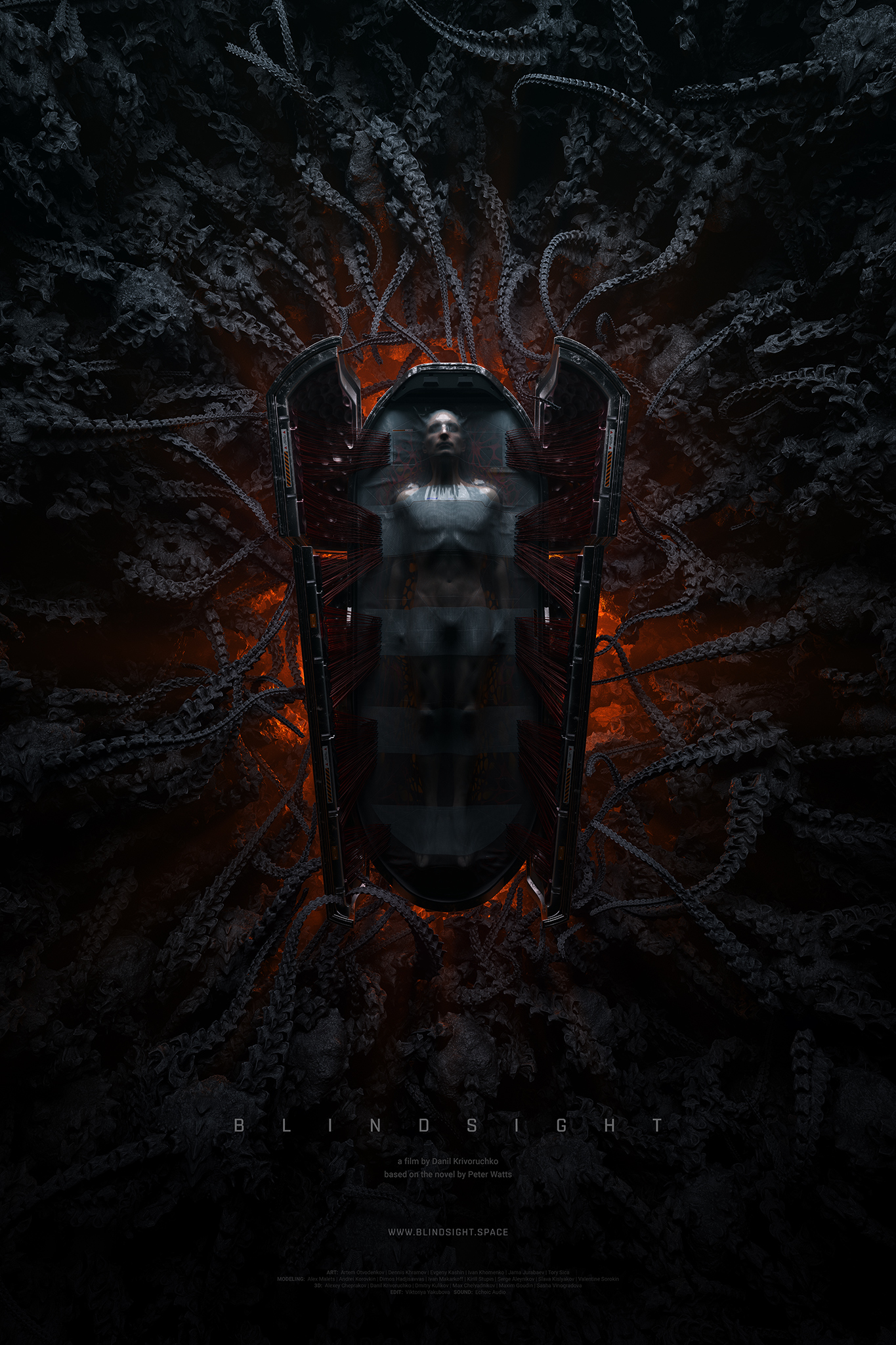
A few years later I decided to give the book another read, this time in English. To my surprise, I found that the novel was freely available to anyone under Creative Commons. I also discovered a link for donations / notes on the author’s site, which I happily took advantage of. I hadn’t expected Peter to respond, but amazingly, he did. After a brief message exchange with him, I reached out to some of my friends in 3D and animation.
We ended up deciding that making a few renders based off Peter Watts’ book was a good way to show our love for the best sci-fi novel out there.. And that is how this project got started.
Initially, we just wanted to make a bunch of still frames. Creating a full CG animated short felt too time-consuming and ambitious. But as time passed, more and more images were made, which helped attract even more incredibly talented people to the project. As the team grew, we realized that we now had enough resources to pull off animation (or so we thought, ha).
But everyone involved could only participate in the spare time they had between commercial projects, so the work moved quite slowly.
I began by simply creating a few style-frames and then gradually moving on to animation tests. At a certain point it began seeming as though there might be enough resources to create something beyond just a series of shots. But at the same time, since there was zero financial backing, it was clear that a short with realistic characters, dialogue and a full script was out of the question. That was simply not within the realm of possibility for our team.
Eventually I landed on the idea of making a mini-short based on the protagonist Siri’s memories and voice-over narration. The entire novel is Siri’s retelling of the events that took place at first contact with a member of an extraterrestrial civilization, so this seemed like a good framework for our short. We chose around 40 key scenes from the book (omitting dialogue) and then whittled the short-list down to 20.
After that the overarching structure of the story became clearer - we were going to begin and end on the hero waking from cryo-sleep. In between these framing scenes, we would focus on his memories, which were going to be shown in reverse order - starting with the final battle between Theseus and Rorschach and ending on the first appearance of the Fireflies in the sky of the Earth, the moment when humanity discovered that we are not alone in this universe.
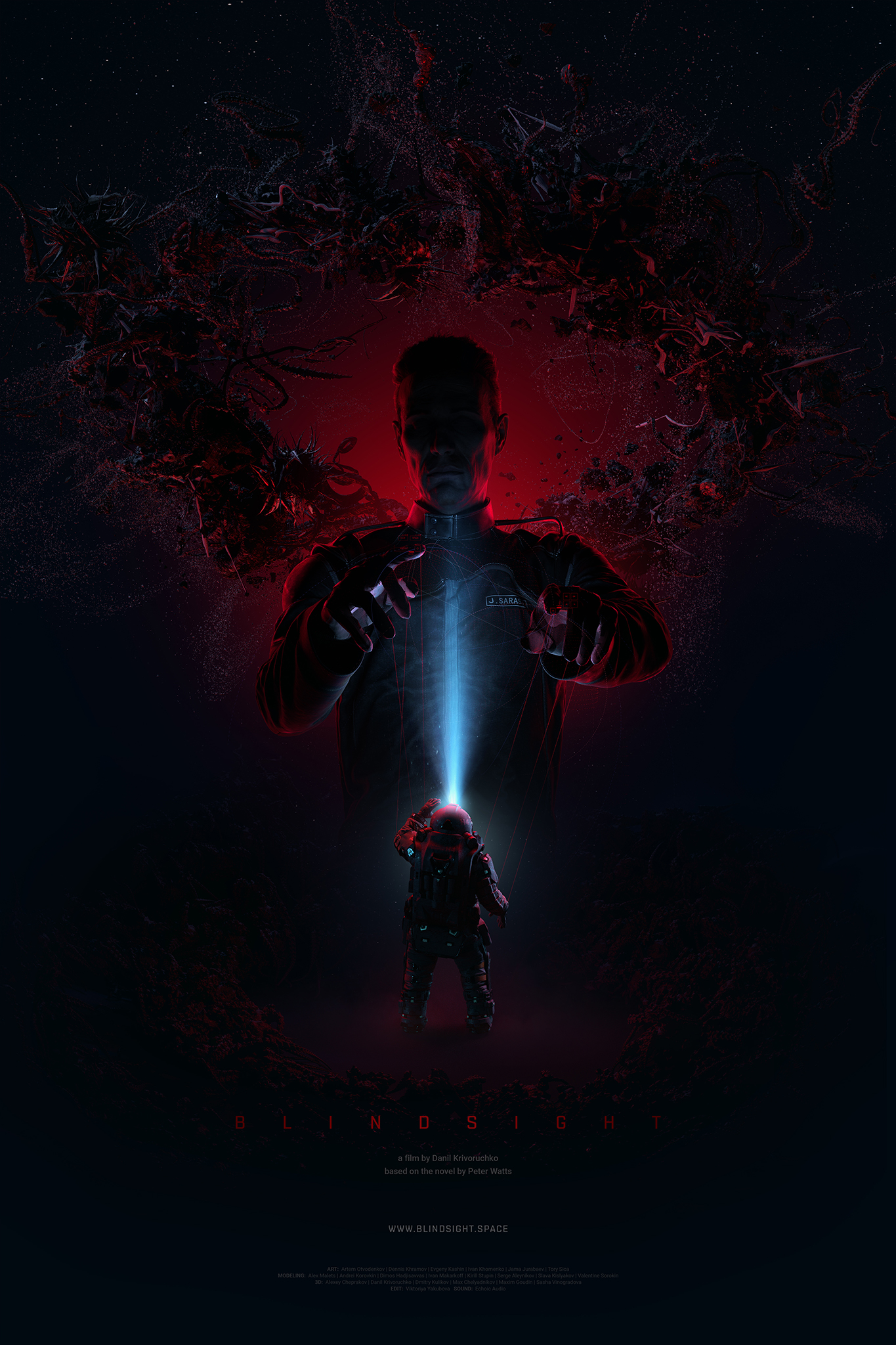
I was lucky enough to get to work with an extremely talented storyboard artist in the early stages of the project. Now that we have the final short, it’s curious to see how closely every shot resembles her initial sketches, made 4 years earlier.
When the content of each shot was clear we moved on to previs, which would make editing the scenes’ layouts, animation, and camera movements much easier. This is also where the video editor got involved - I kept updating the previs until everyone was happy with the overall rhythm and montage.
Next came the most time-consuming part of the process - each scene required detailed modeling, realistic materials for each of the objects, and animation of these objects and the characters. For certain shots, this process ended up taking over a year.
Then all these scenes needed to be rendered. A four-and-a-half minute animation is no joke, when rendering certain frames takes up to 15-20 minutes. Since there was no budget, render-farms were not an option, so almost all the scenes were rendered at home, at night, on my personal computer. The rendering alone took around a month and a half of pure computation, at the very least.
When we finished the rendering and shot compositing, the video editor went over the whole thing again, checking and tightening every cut. And finally, each shot went through color-correction, in order to unify all the color schemes and set the tone for the entire film.
UI Elements
That was another collaboration with The Loop production, where I was responsible for various "scan" visualizations. The one with the skeleton and lungs was probably the most complex I've ever done with 15 different layers of scanning working together to achieve the data density wanted by the creative director.
The novel has a detailed description of the state of the Solar System around the time of Theseus’ launch. So we started off by trying to recreate the complete chronology of these events in a visualization -from the discovery of the Burns-Caulfield object to the abrupt change in course Theseus made in order to fly to the Oort cloud region, instead of the planned destination of Kuiper Belt.
It wouldn’t have been hard sci-fi if we had just drawn the orbits and sprinkled a few asteroids throughout at random. So instead we took the actual planets’ trajectories and wound the whole system up to the year 2082.
We did the same for all the asteroids (found their exact locations and their orbits in the IAU database and then calculated where that would place them at the time the book’s story starts.
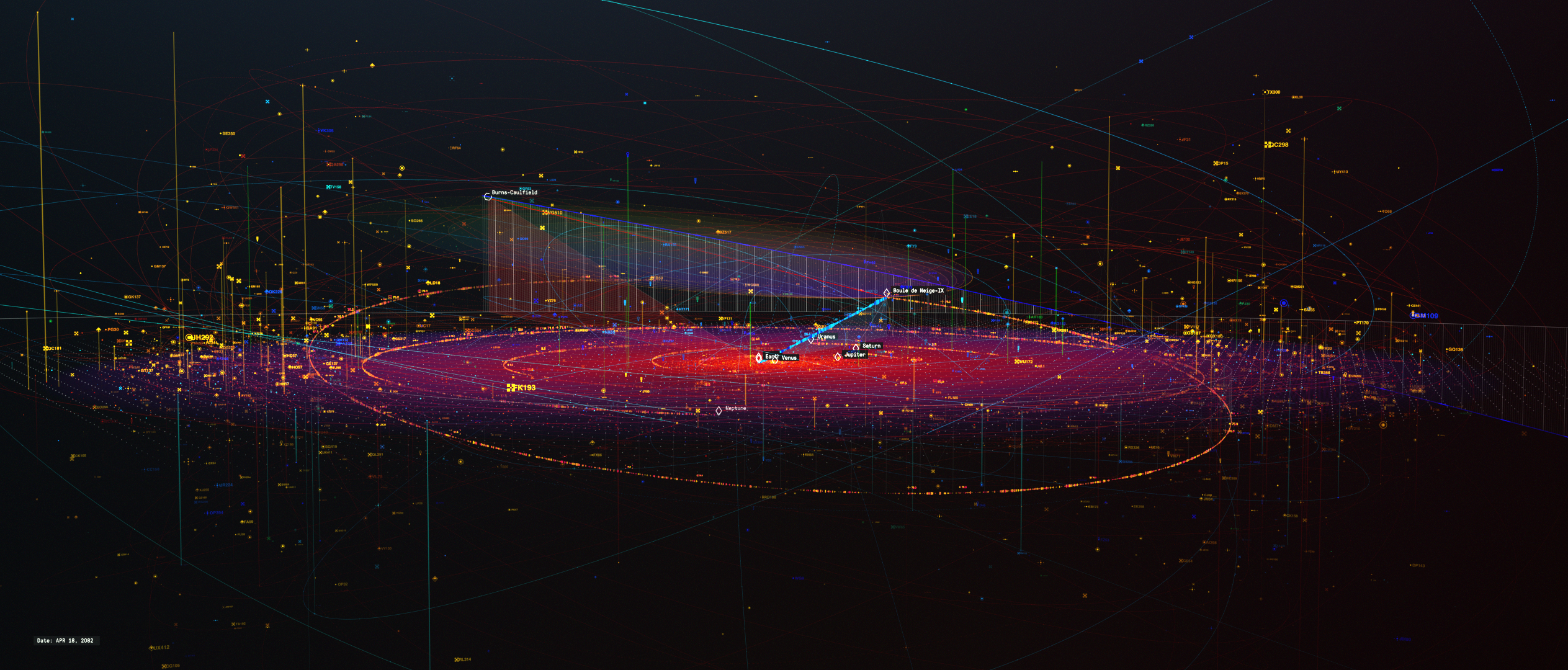
The book’s characters are all very much post-human - various modifications and implants let them operate with much higher volumes of information than those accessible to a regular person. We considered this when designing the interfaces, making the information density higher than would be comfortable for a typical human. And in Sarasti’s case, the UI could go into hyperdrive - his capabilities of perception and pattern recognition justified any level of complexity. Four-dimensional objects as a system of data visualisation and manipulation - why not?
The spacesuits’ interface was the complete opposite. No human would want to be distracted by complex constellations of data when exploring an alien spaceship full of unknown dangers.
We modeled them off modern military interfaces, updated for the 2080s. Minimum “frills”, maximum functionality. The dark red color is less distracting and disruptive to night vision. Add to that exact target tracking and a space adaptation map with no “up” or “down”.
Credits:
Directed by:
Edited by:
Score / Sound Design:
Voiceover Talent:
Art:
Modeling:
3D:
Web Concept & Design:
Copy Editor:
Web Development:
Danil Krivoruchko
Viktoriya Yakubova
Echoic Audio
Siri Keeton - Daniel Shapiro
The Captain - Norelia Rey
Susan James / Sascha - Natasia Marquez
Amanda Bates - Victoria Hogan
Jukka Sarasti - Ron Marasa
Rorschach - Emma Maidenberg
Jim More - Troy Hudson
News Anchors - Bernie Baggarly, Alessa Ray, V Lexx
Artem Otvodenkov, Dennis Khramov, Evgeny Kashin, Ivan Khomenko,
Jama Jurabaev, Tory Sica
Alex Malets, Andrei Korovkin, Dimos Hadjisavvas, Ivan Makarkoff,
Kirill Stupin, Serge Aleynikov, Slava Kislyakov, Valentine Sorokin
Alexey Cheprakov, Danil Krivoruchko, Dmitry Kulikov, Max Chelyadnikov,
Maxim Goudin, Maxim Gureev, Sasha Vinogradova
Anton Repponen
Anya Formozova
Astroshock

